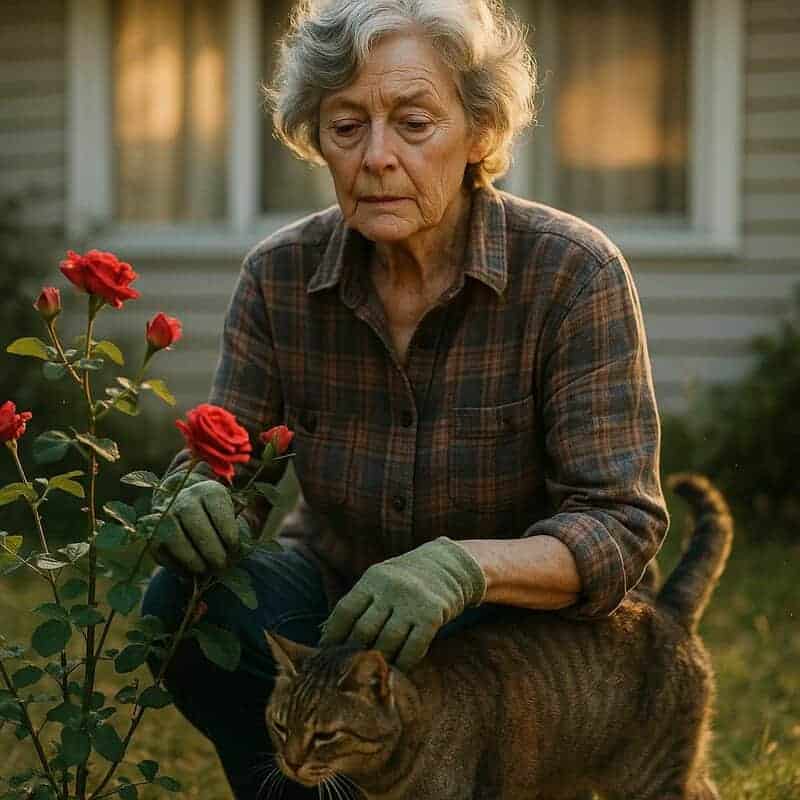Ancient Rituals People Still Practice in Modern Cities
Recent studies suggest that nearly 42% of urban dwellers regularly participate in traditional rituals, highlighting the persistent influence of ancient customs even in highly modernized environments (Pew Research Center). These practices, deeply rooted in psychological needs for belonging and identity, play essential roles in urban social systems. However, city residents often face the challenge of balancing cultural heritage with the pressures of modernization, navigating between honoring tradition and adapting to contemporary lifestyles (ScienceDirect).
1. Yoga and Meditation
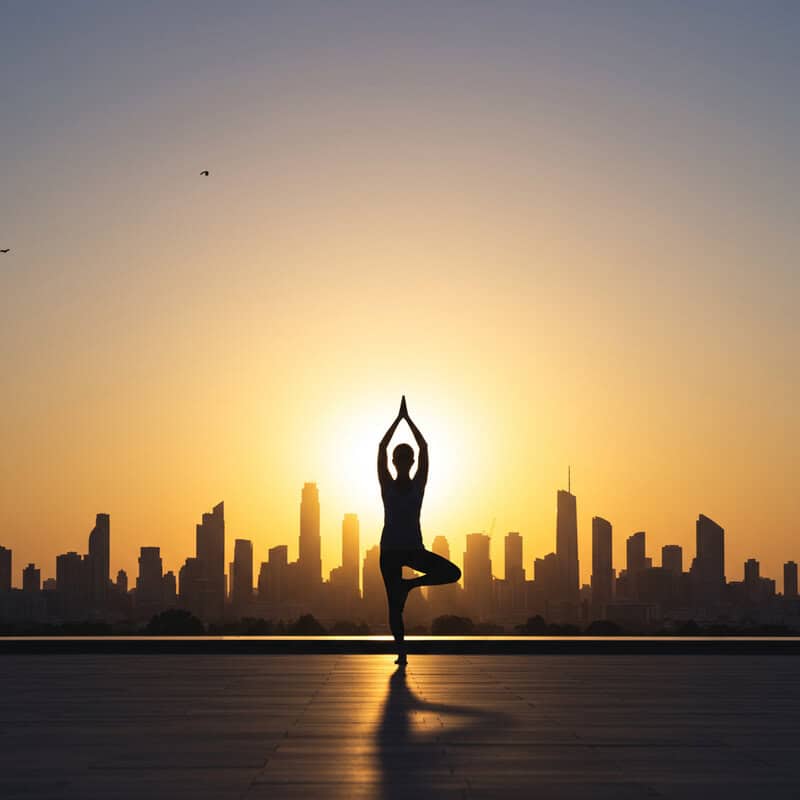
Yoga and meditation trace their origins to ancient India, with references found in texts like the Rig Veda and the Upanishads, dating back thousands of years. These practices were initially spiritual disciplines, aimed at achieving mental clarity, physical health, and a deeper connection with the self. Today, yoga and meditation have become integral to urban wellness routines, with studios and apps making them accessible in cities worldwide (Yoga Journal).
Modern scientific research highlights numerous mental health benefits, including reduced anxiety, improved focus, and enhanced emotional regulation (NCBI). Many city dwellers find solace in these practices amid fast-paced, stressful environments, often integrating them into daily schedules for balance and resilience. However, mental health professionals caution that while beneficial, yoga and meditation are not substitutes for clinical treatment of serious psychological conditions. Some individuals may experience increased anxiety or emotional discomfort when first starting, underscoring the importance of proper guidance and self-awareness (Psychology Today). Urban adoption of these ancient rituals reflects a collective quest for well-being and inner peace amidst modern pressures.
2. Traditional Tea Ceremonies
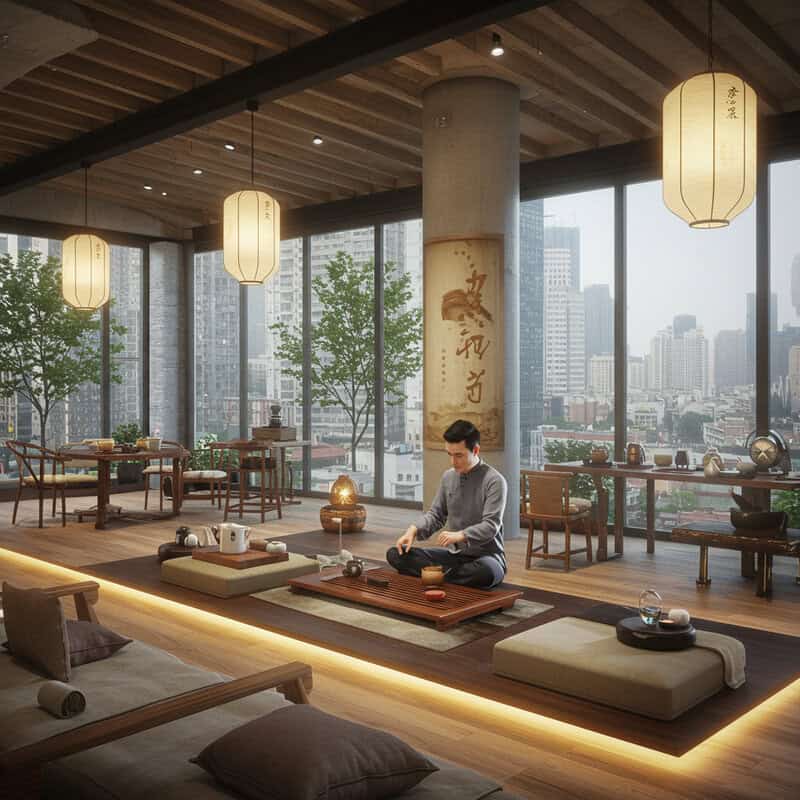
Traditional tea ceremonies have roots stretching back centuries, most notably in Japan, China, and Korea. The Japanese chanoyu or “way of tea,” for example, developed in the 16th century and emphasizes aesthetics, mindfulness, and hospitality (Britannica). In modern cities, these rituals have been adapted for the urban pace, with dedicated tea rooms, cultural centers, and even corporate wellness programs offering contemporary takes on the ceremony.
The psychological effects of tea ceremonies are profound: the slow, deliberate preparation and consumption of tea promotes relaxation, present-moment awareness, and a sense of calm (NCBI). For many urbanites, participating in these ceremonies offers a rare opportunity to disconnect from digital distractions and reconnect with themselves and others. The communal aspect is equally significant, fostering social bonds and a sense of belonging among participants. Whether in a formal setting or a casual gathering, the act of sharing tea remains a powerful tool for community-building—bridging generations, cultures, and backgrounds in the heart of the city (Nippon.com).
3. Fasting Rituals

Fasting has been practiced for millennia in various religious and cultural contexts, from Ramadan in Islam to Yom Kippur in Judaism and Lent in Christianity. Traditionally, these rituals serve spiritual, communal, and purifying purposes. In urban environments, fasting has evolved into modern adaptations such as intermittent fasting, which focuses on cycles of eating and abstaining for health and wellness rather than solely spiritual reasons (Harvard Health).
Physiologically, fasting can trigger cellular repair processes, improve insulin sensitivity, and promote metabolic health (NCBI). These effects have made fasting popular in cities, where busy professionals seek efficient ways to boost energy and control weight. However, experts caution that fasting is not suitable for everyone—people with diabetes, eating disorders, or certain medical conditions should avoid unsupervised fasting. It’s essential to consult a healthcare provider before starting any fasting regimen to ensure safety, particularly in urban populations where lifestyle and stress levels may vary greatly (Mayo Clinic).
4. Bathhouse and Sauna Traditions
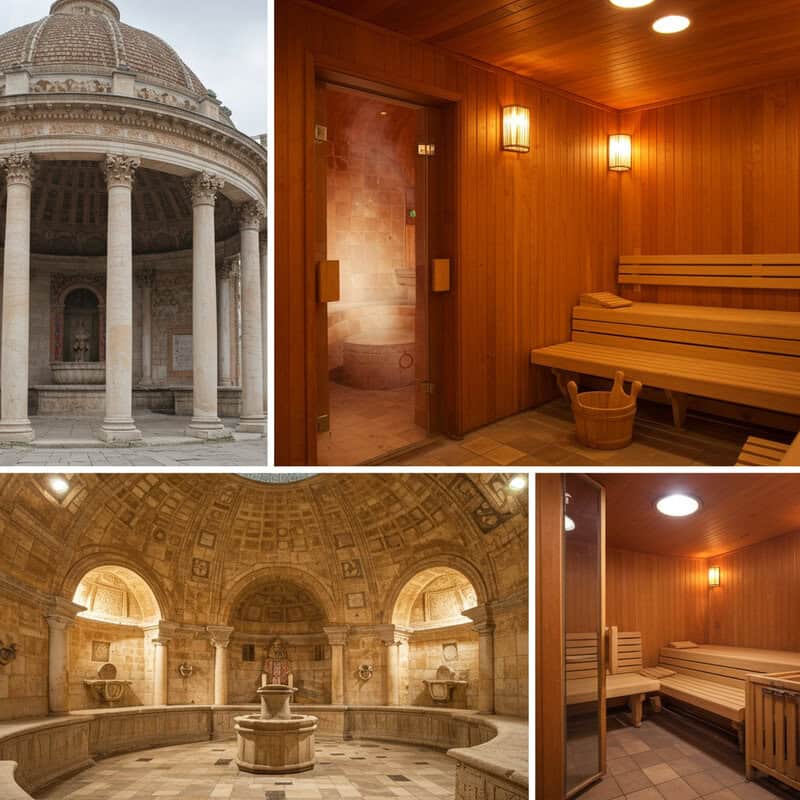
Communal bathing rituals have ancient origins, with Roman baths, Turkish hammams, and Finnish saunas serving as vital social and health institutions for centuries. The Roman bathhouses, known as thermae, date back to at least the 2nd century BCE and were central to daily life, combining relaxation, hygiene, and social interaction (Britannica). In Finland, the sauna is a time-honored tradition believed to cleanse both body and mind, while Turkish baths are famed for their elaborate steam rituals.
Today, modern cities around the globe feature public bathhouses and saunas, which continue to offer both physical and psychological benefits. Scientific research has shown that regular sauna use can help reduce stress, improve mood, and even support cardiovascular health by increasing circulation and lowering blood pressure (NCBI). The communal aspect remains important, providing a space for relaxation, conversation, and social bonding away from the pressures of urban life. This blend of ancient ritual and contemporary wellness underscores the enduring appeal of communal bathing traditions in the heart of modern cities (Sauna International).
5. Fire Festivals
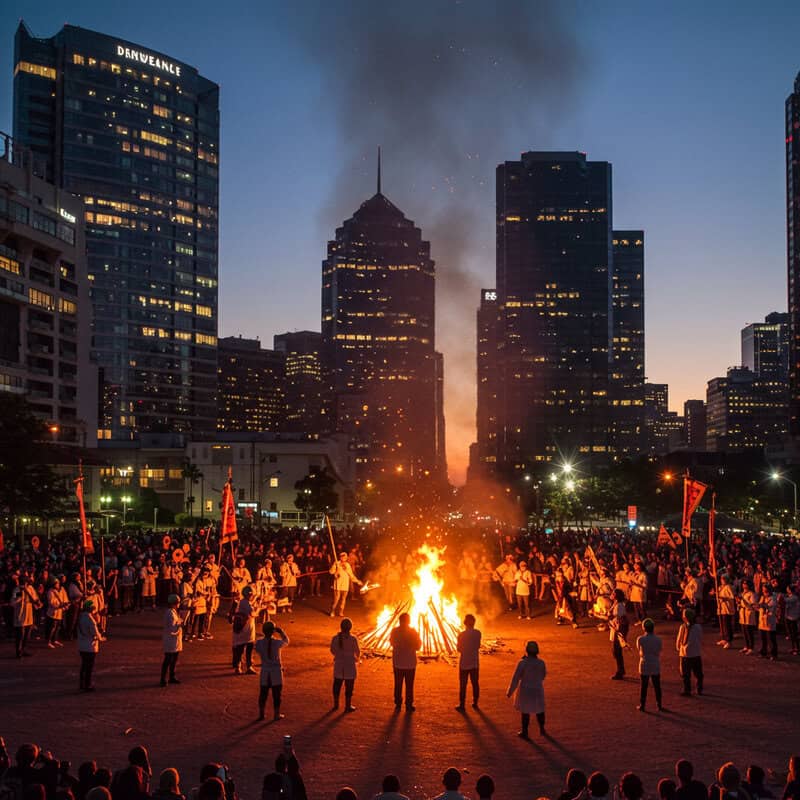
Throughout history, fire has held profound ritual significance, symbolizing purification, renewal, and the connection between the earthly and the divine. Ancient fire festivals like Beltane in Celtic tradition and Holika Dahan in Hindu culture marked seasonal changes and communal unity (History.com). In modern cities, these traditions continue with contemporary fire festivals such as Edinburgh’s Beltane Fire Festival and the annual Fire Festival in San Francisco.
Urban fire festivals often blend traditional ritual elements with artistic performances, music, and parades, drawing diverse crowds and fostering a sense of community. The mesmerizing sight of controlled flames brings people together to celebrate cultural heritage and collective identity (Beltane Fire Society). However, the use of fire in urban environments necessitates strict safety protocols. Local authorities work closely with organizers to ensure fire safety, manage crowd control, and minimize environmental risks (NFPA). City fire departments may require permits, safety equipment, and trained personnel on-site to protect both participants and bystanders, ensuring that ancient fire rituals can be enjoyed safely in the heart of the city.
6. Smudging and Incense Burning
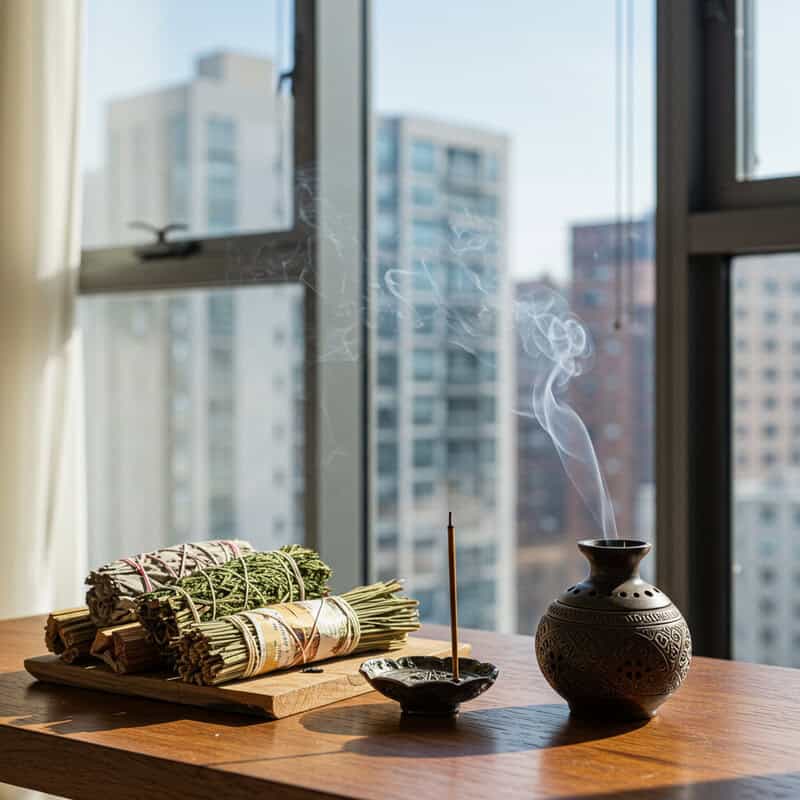
Smudging and incense burning are ancient practices rooted in the belief that smoke purifies spaces, objects, and individuals. Indigenous cultures in North America have long used bundles of sage, cedar, or sweetgrass in smudging rituals to cleanse negative energy and invite spiritual protection (Smithsonian Magazine). In Asia, incense has been central to religious and meditative ceremonies for thousands of years, with temples and homes alike filled with fragrant smoke to honor ancestors and create sacred ambiance (Britannica).
In urban homes and city apartments, incense burning has surged in popularity as people seek to manage stress, enhance mindfulness practices, or simply create a relaxing environment. Specialty shops and markets offer a wide range of incense and smudging products, blending traditional scents with modern aesthetics. However, frequent indoor burning can pose respiratory risks, particularly for individuals with asthma or allergies. Studies show that incense smoke contains particulate matter and volatile organic compounds that may affect indoor air quality (NCBI). Experts recommend good ventilation and moderation to enjoy the benefits of these ancient rituals while minimizing health risks in urban settings.
7. Martial Arts Practices
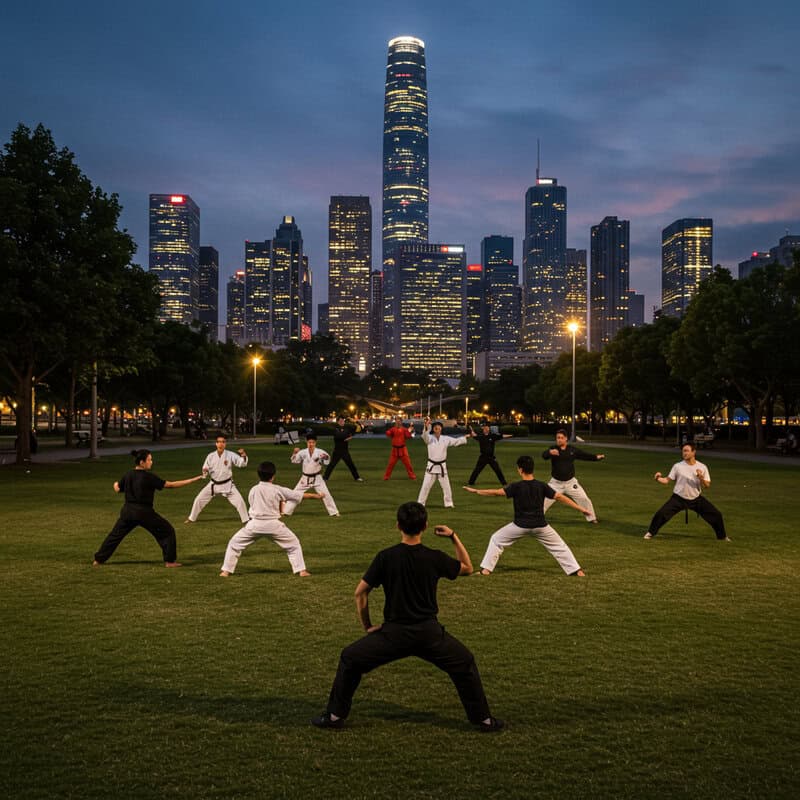
Martial arts have deep cultural roots, originating as systems of self-defense, discipline, and spiritual development across East Asia, Africa, and Europe. Ancient traditions such as Chinese Kung Fu, Japanese Judo, Korean Taekwondo, and Brazilian Capoeira were not only methods of combat but also vehicles for transmitting values like respect, perseverance, and harmony (Britannica). Over centuries, these practices have evolved, maintaining their ritualistic elements through structured movements, ceremonial uniforms, and ranking systems.
In modern cities, martial arts have become fixtures in fitness centers, community programs, and after-school activities. Urban dwellers are drawn to martial arts for their holistic health benefits, which include improved cardiovascular fitness, flexibility, balance, and muscle strength (Healthline). Additionally, the mental discipline required fosters focus, emotional regulation, and stress reduction, making martial arts an appealing antidote to city life’s fast pace. The communal aspect also persists, as training in groups nurtures camaraderie and mutual support. Whether for self-defense, exercise, or personal growth, martial arts continue to bridge ancient wisdom and contemporary urban wellness.
8. Communal Feasting
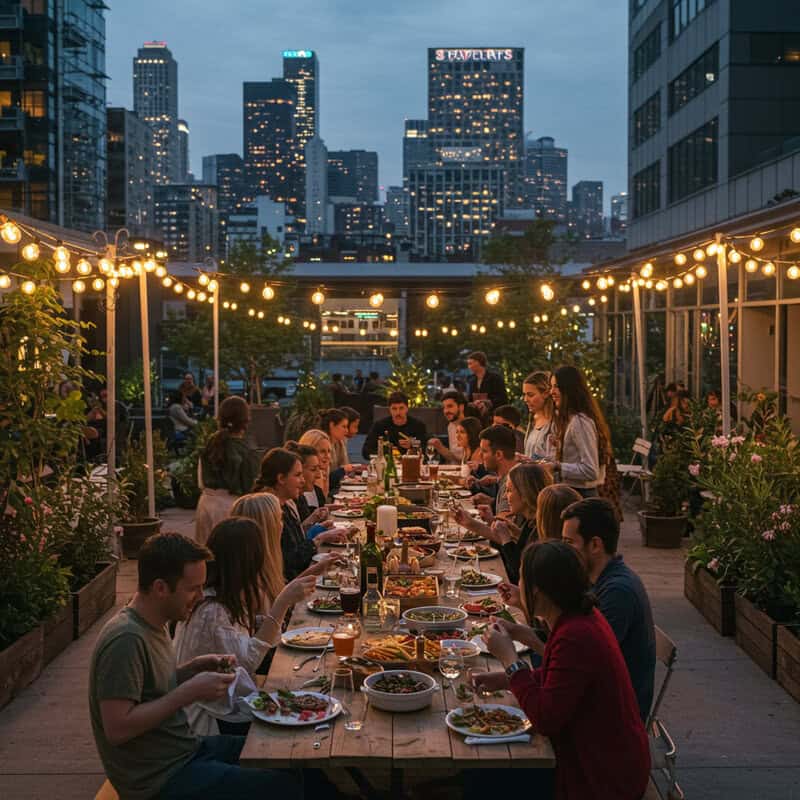
Feasting has been a cornerstone of human culture since ancient times, marking harvests, religious festivals, and rites of passage across civilizations. In societies such as the ancient Greeks, Romans, and Indigenous peoples of North America, communal meals symbolized abundance, gratitude, and unity (National Geographic). The act of sharing food strengthened social ties and reinforced collective identity.
Today, urban potlucks, block parties, and food festivals continue this tradition in a modern context. These gatherings foster community by bringing together neighbors, coworkers, and diverse city populations to share homemade dishes and culinary traditions. Events like New York’s Smorgasburg or London’s street food festivals create vibrant spaces for cultural exchange and social connection (Time Out New York). However, the abundance and variety of food at these events can challenge dietary balance. Nutritionists recommend practicing moderation, opting for balanced portions, and including fresh fruits and vegetables amid indulgent offerings (MyPlate.gov). Modern communal feasting thus blends ancient social rituals with mindful eating in the heart of the city.
9. Tattooing and Body Art
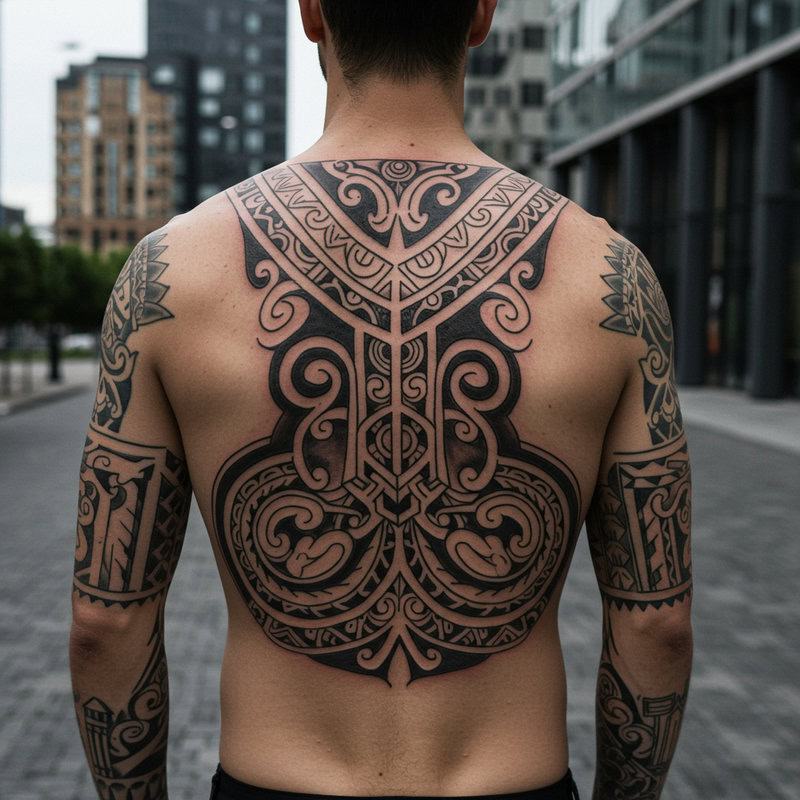
Tattooing and body art have ancient origins, with archaeological evidence showing that humans have marked their skin for ritual, social, or spiritual reasons for thousands of years. The oldest known tattoos were discovered on the 5,300-year-old mummy Ötzi the Iceman, while Polynesian, Egyptian, and Indigenous cultures have long used body art to convey identity, status, or protection (Smithsonian Magazine). These traditions often involved intricate symbolism and were central to important rites of passage.
In modern urban centers, tattooing has experienced a dynamic revival. Tattoo parlors thrive in cities worldwide, and body art has become a prominent form of self-expression and cultural commentary. Contemporary tattoo artists often blend traditional motifs with modern aesthetics, reflecting the diverse influences found in urban life (National Geographic). However, getting a tattoo involves certain health considerations. Experts warn that improper technique or unsanitary conditions can lead to skin infections, allergic reactions, or transmission of blood-borne diseases. It is crucial to choose reputable, licensed studios and follow aftercare instructions to minimize health risks (CDC). Tattooing remains a powerful, ancient ritual adapted for today’s urban context.
10. Dance Ceremonies
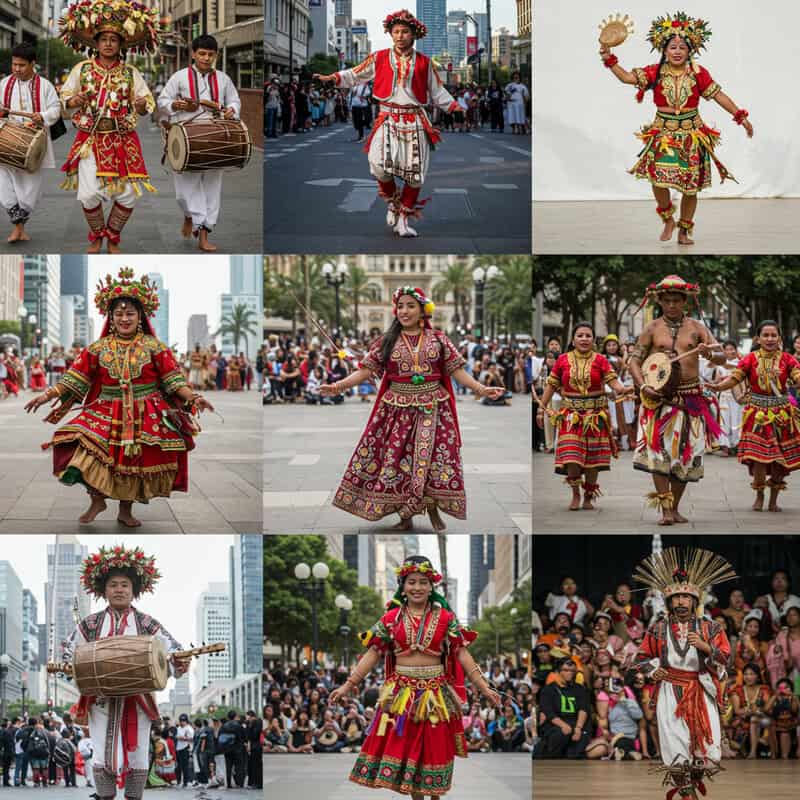
Traditional dance ceremonies have served as powerful expressions of cultural identity, spiritual connection, and communal storytelling for millennia. Indigenous peoples, African tribes, and cultures across Asia and Europe have employed dance to celebrate harvests, honor ancestors, or mark rites of passage (Britannica). Each ritual dance is characterized by unique movements, costumes, and music that encode historical narratives and societal values, helping to preserve heritage across generations.
In modern cities, dance continues to play a vibrant role in urban culture. Nightclubs, festivals, and community centers become stages for both traditional and contemporary dance forms—ranging from salsa nights and hip-hop battles to Bollywood showcases and powwows. These gatherings foster inclusivity and cultural exchange, helping city dwellers connect with their roots or explore new identities (Dance Magazine). The physical act of dancing also promotes well-being, reducing stress and enhancing social bonds. As urban nightlife evolves, dance remains a living ritual that bridges ancient traditions and the dynamic rhythms of city life, uniting people through movement and shared experience.
11. Shamanic Healing
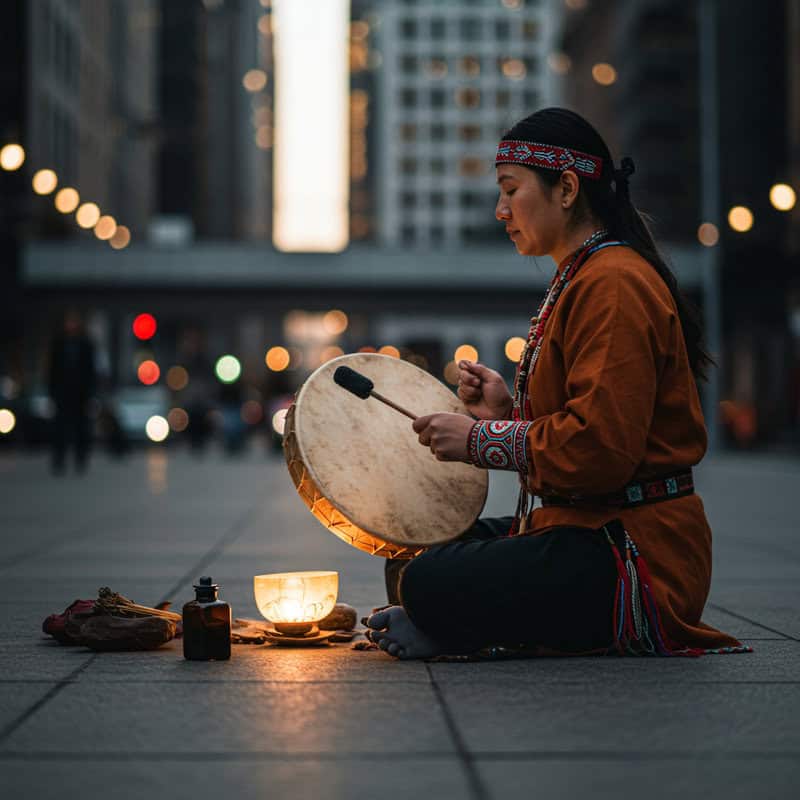
Shamanic healing is an ancient practice rooted in indigenous cultures across Asia, the Americas, and Siberia. Traditionally, shamans serve as intermediaries between the physical and spiritual realms, employing techniques such as drumming, chanting, herbal remedies, and guided journeys to facilitate healing and restore balance to individuals and communities (Britannica). These rituals often address both physical and emotional ailments, attributing illness to spiritual disharmony or energy blockages.
In modern urban settings, shamanic healing has found new life within wellness circles and alternative health communities. City dwellers seek out workshops, drum circles, and one-on-one sessions for stress relief, personal insight, or spiritual exploration. Some practitioners blend traditional shamanic elements with modern therapeutic approaches, creating hybrid modalities that appeal to a wide audience (Psychology Today). However, experts caution that shamanic healing should complement, not replace, evidence-based medical care—especially for serious mental or physical health conditions. It’s important for individuals to seek qualified practitioners and consult health professionals to ensure safety and efficacy, maintaining a balance between ancient wisdom and modern science in urban wellness practices.
12. Pilgrimage Walks
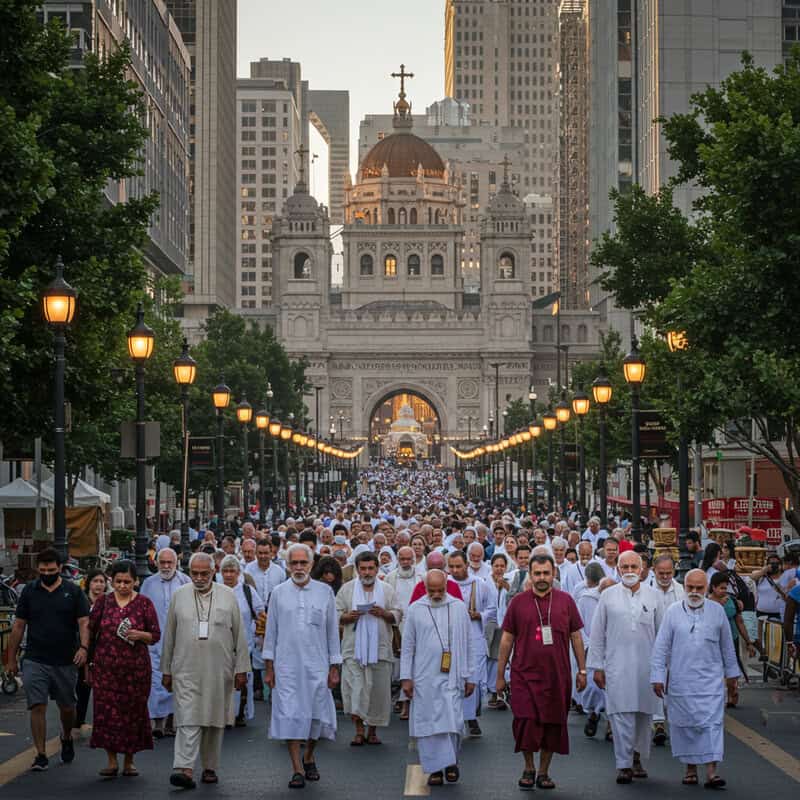
Pilgrimage walks are ancient rituals found in many religions and cultures, symbolizing a journey toward spiritual enlightenment, self-discovery, or penance. Famous examples include the Camino de Santiago in Spain, the Hajj to Mecca, and the Kumbh Mela in India, all of which require participants to undertake significant physical journeys as acts of devotion and reflection (Britannica). These treks often involve communal participation, fostering solidarity and a sense of belonging among pilgrims.
In contemporary cities, the tradition of pilgrimage has adapted into urban walking pilgrimages or “spiritual walks.” These may involve visiting significant religious sites, historical landmarks, or simply traversing city parks and neighborhoods with mindfulness and intention. Organizations and communities in cities like New York and London now offer guided urban pilgrimages, transforming the urban landscape into a space for contemplation and connection (The New York Times). Physically, pilgrimage walks promote cardiovascular health and mental well-being, providing a break from the city’s fast pace. Spiritually, they offer an opportunity for introspection and renewal, allowing urban dwellers to find meaning and tranquility within their everyday environments.
13. Prayer Circles
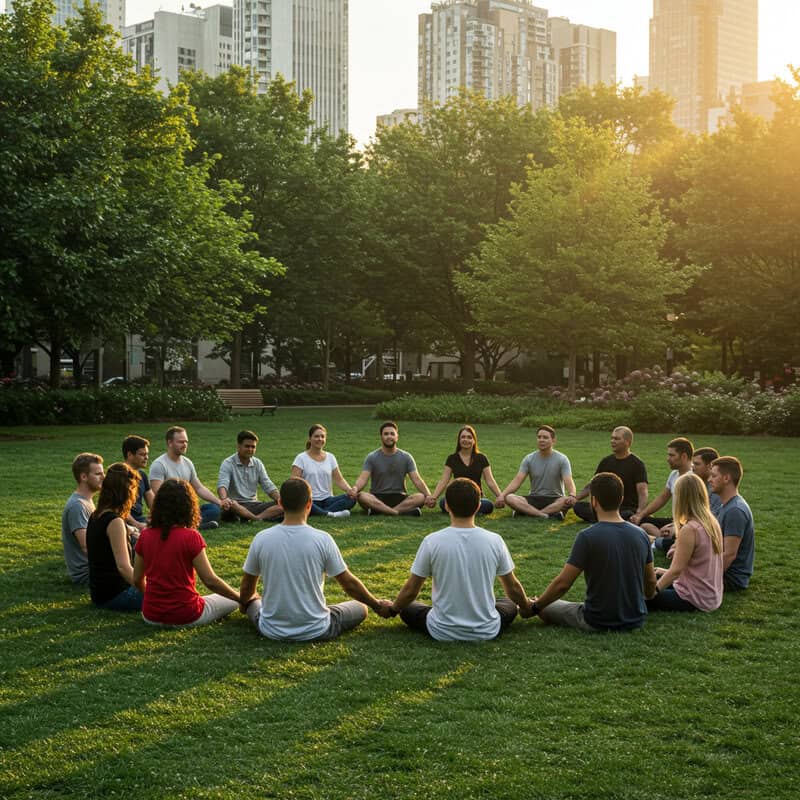
The tradition of collective prayer dates back thousands of years, spanning cultures and religions from Indigenous North American gatherings to ancient Christian, Jewish, and Muslim communities. Prayer circles—where participants join hands or sit together in a circle to pray—were originally intended to invoke divine guidance, healing, or community protection (Britannica). The shared ritual fosters a deep sense of unity and spiritual connection, transcending individual concerns.
In modern cities, prayer circles are embraced by diverse faith groups, often taking place in homes, places of worship, and even public parks. These gatherings provide not only spiritual support but also psychological benefits: research indicates that collective prayer can reduce stress, promote emotional resilience, and strengthen social bonds (NCBI). However, in urban environments, ensuring the safety and inclusivity of such gatherings is paramount. Organizers must consider factors like accessible locations, security protocols, and cultural sensitivity to create welcoming spaces for all participants. As cities grow more diverse, prayer circles continue to serve as vital sanctuaries—offering comfort, hope, and community in the midst of urban complexity.
14. Lunar and Solar Celebrations
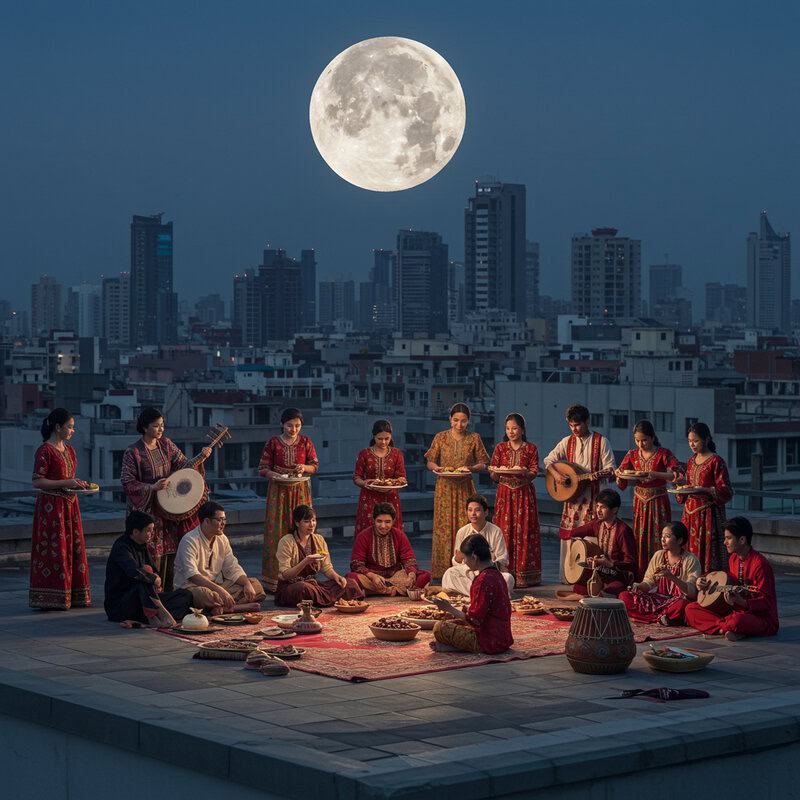
Ancient civilizations closely observed the cycles of the moon and sun, shaping their calendars and rituals around celestial events. Lunar festivals such as the Chinese Mid-Autumn Festival and the Hindu Karva Chauth celebrate the full moon, symbolizing unity, harvest, and renewal (National Geographic). Solar celebrations, including the Persian Nowruz and the Winter Solstice, honor the changing seasons and the return of light, often involving feasts, music, and communal gatherings (History.com).
In contemporary urban environments, these ancient observances have evolved into vibrant city events. Parades, rooftop moon-viewing parties, and sunrise yoga sessions mark these celestial milestones, bringing together diverse communities in celebration. Cities like San Francisco and London host lantern festivals and solstice parades, blending tradition with modern entertainment and art (Lantern Parade). Rooftop venues often organize moonlit gatherings, allowing city dwellers to reconnect with nature’s rhythms despite the urban skyline. These events promote social cohesion and offer moments of collective awe, demonstrating how ancient lunar and solar rituals continue to inspire joy and unity in the heart of modern cities.
15. Herbal Medicine Making

Herbal medicine is one of humanity’s oldest healing traditions, with roots in ancient Egypt, China, India, and Indigenous cultures worldwide. Healers historically gathered, dried, and blended plants to treat ailments, relying on generational knowledge and observation (NCBI). Ancient texts like the Chinese Shennong Ben Cao Jing and the Greek works of Hippocrates documented the therapeutic uses of hundreds of herbs.
In modern cities, home apothecaries and community herbal workshops have seen a resurgence, with urbanites cultivating windowsill gardens or shopping at farmers’ markets for medicinal plants. DIY tinctures, teas, and salves are crafted for common conditions like anxiety, colds, or insomnia. This revival is fueled by a desire for natural wellness and self-sufficiency (The New York Times). However, safety is paramount, as some herbs can interact adversely with prescription medications or cause side effects. Experts recommend consulting healthcare providers before combining herbal and pharmaceutical treatments and relying on credible sources for information (FDA). Thoughtful integration of ancient herbal wisdom enriches urban wellness while prioritizing safety.
16. Fortune Telling and Divination
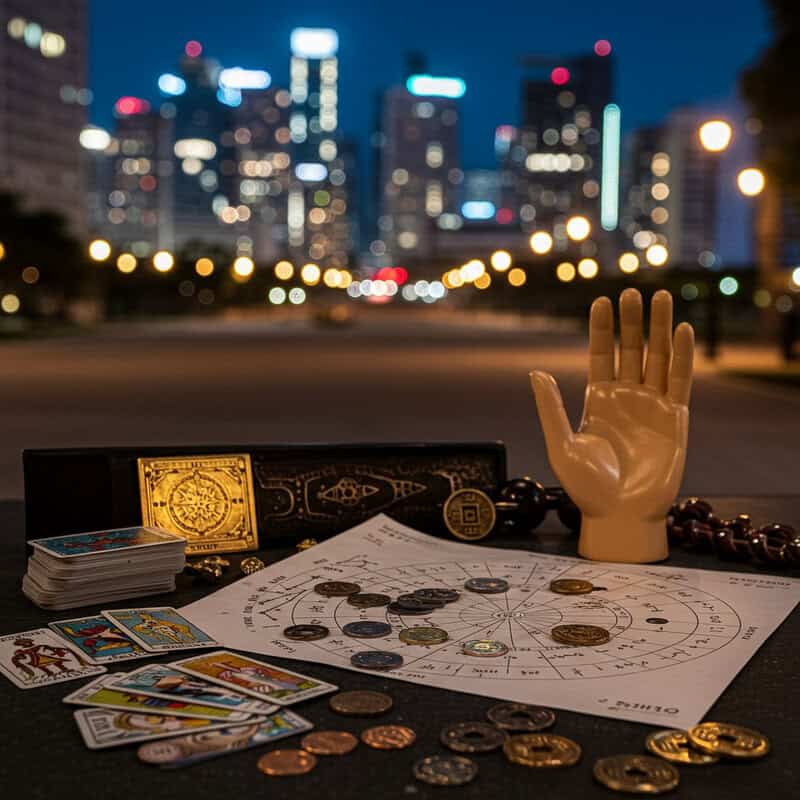
Divination has been practiced across civilizations for millennia, with ancient methods such as tarot reading, astrology, palmistry, and I Ching originating in Europe, the Middle East, China, and India. These practices were believed to provide insights into the future, uncover hidden truths, or communicate with the divine (Britannica). Ancient rulers and everyday people alike consulted oracles and seers before making important decisions, reflecting a deep human desire for certainty and control.
In modern urban markets, fortune telling has found renewed popularity. Tarot readers, astrologers, and palmists offer their services at street fairs, metaphysical shops, and online platforms, attracting clients from all walks of life. The appeal lies not only in curiosity about the future but also in the psychological benefits of reflection and reassurance. Many people use divination as a tool for self-exploration, decision-making, or coping with uncertainty (Psychology Today). While these rituals can offer comfort and perspective, experts advise maintaining a healthy skepticism and seeking evidence-based guidance for major life decisions. Urban divination thus bridges ancient ritual with modern needs for meaning and direction.
17. Sacred Music and Chanting
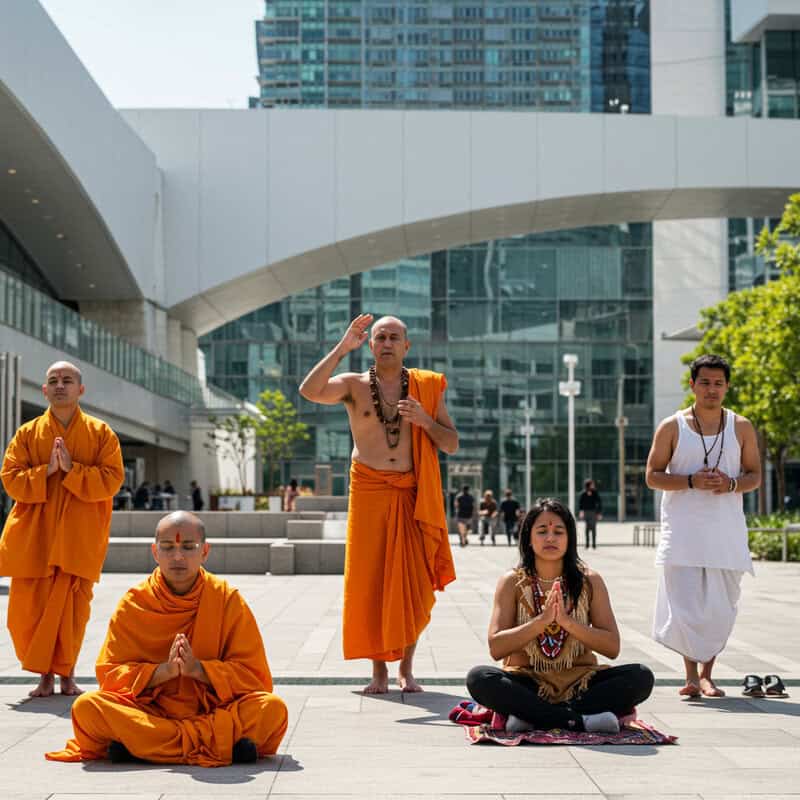
Chanting and sacred music have been fundamental to ritual and spiritual practice since ancient times, serving as a means of connecting with the divine, fostering group cohesion, and altering consciousness. Cultures from Gregorian monks in medieval Europe to Vedic priests in India and Indigenous communities around the world have used repetitive vocalizations, mantras, and rhythmic drumming to invoke healing, guidance, and communal unity (Britannica).
Modern research supports the mood-enhancing effects of chanting, showing that collective vocalization can reduce stress, elevate mood, and even synchronize heart rhythms among participants (NCBI). In today’s cities, chanting circles and kirtan gatherings have become popular in yoga studios, community centers, and parks. These events provide urban dwellers with opportunities to experience calm, connection, and spiritual uplift in the midst of busy environments. Some circles welcome all traditions, blending ancient mantras with contemporary music styles to foster inclusivity and creativity (Yoga Journal). Sacred music and chanting thus continue to resonate deeply, offering psychological and communal benefits in the heart of the urban landscape.
18. Rites of Passage Ceremonies
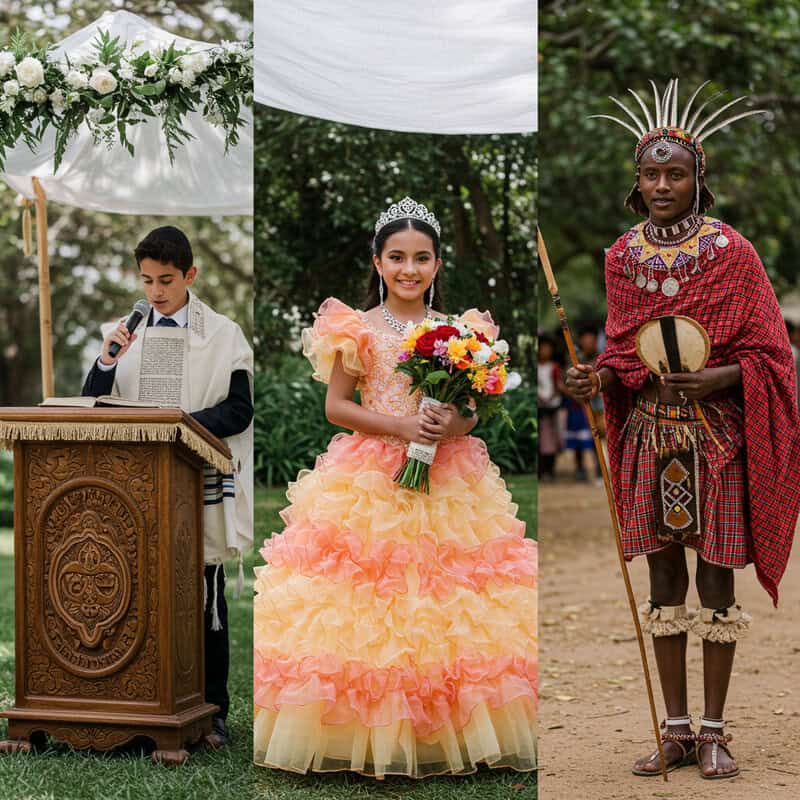
Rites of passage, such as coming-of-age ceremonies, have marked significant life transitions for millennia. Cultures worldwide celebrate moments like puberty, marriage, and entry into adulthood with rituals that may involve symbolic acts, gifts, or communal gatherings. Examples include the Jewish Bar and Bat Mitzvah, the Latin American Quinceañera, and the Maasai warrior initiation (Britannica). These ceremonies provide structure, meaning, and a sense of belonging as individuals move through key developmental stages.
In modern cities, traditional rites of passage are often adapted to reflect urban lifestyles and multicultural realities. Urban families may host celebrations in community centers, religious institutions, or even public parks, blending ancestral customs with contemporary elements. New forms, such as graduation parties and debutante balls, have also emerged to mark academic or social milestones (Psychology Today). Psychologists note that these rituals play a crucial role in supporting mental health, offering validation, emotional support, and a sense of accomplishment during potentially stressful transitions. By anchoring personal change within communal ritual, cities help individuals navigate life’s turning points with resilience and connection.
19. Masked Festivals
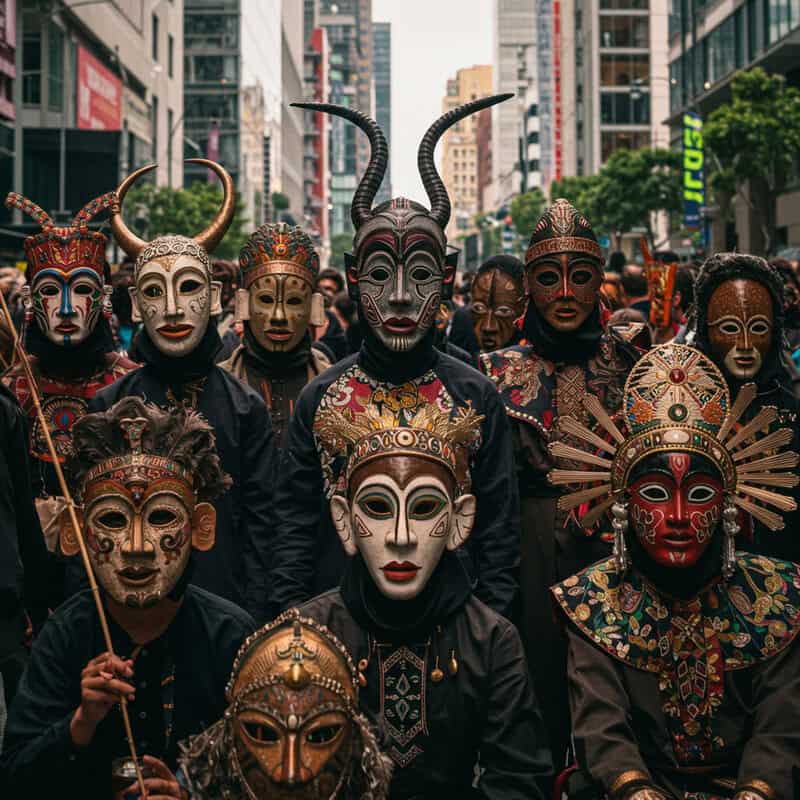
Masks have held cultural and ritual significance across civilizations, serving as tools for transformation, storytelling, and spiritual connection. Ancient Greeks used masks in theater to convey emotions and personas, while African, Asian, and Indigenous cultures have incorporated elaborate masks into ceremonies to honor ancestors, celebrate harvests, or ward off evil spirits (Britannica). These rituals enabled participants to transcend their everyday identities and engage in communal celebration or reflection.
In modern cities, masked festivals and masquerade balls merge these ancient traditions with contemporary entertainment. Events like the Venice Carnival, New Orleans’ Mardi Gras, and urban masquerade parties invite people of diverse backgrounds to don masks, fostering creativity, anonymity, and inclusivity. City parades and performances often feature masked dancers and musicians, creating vibrant spectacles that draw communities together (National Geographic). However, public health considerations—especially highlighted during pandemics—necessitate measures such as well-ventilated venues and hygiene protocols. Organizers must balance the celebratory use of masks with safety needs, ensuring that these festive rituals can be enjoyed while safeguarding community well-being in densely populated urban settings.
20. Sacred Geometry and Mandala Art

Sacred geometry refers to the symbolic use of geometric patterns and shapes in spiritual and religious contexts, with roots in ancient civilizations such as Egypt, India, and Greece. These cultures believed that geometric forms—like the circle, triangle, and spiral—reflected the underlying order of the cosmos and were keys to understanding the divine (Britannica). Mandalas, intricate circular designs originating in Hindu and Buddhist traditions, embody this principle by representing wholeness, unity, and meditative focus.
In urban environments, mandala art workshops and public installations have become increasingly popular. Community centers, art studios, and wellness spaces host events where participants collaboratively create mandalas using chalk, sand, or paint, embracing both the aesthetic and meditative aspects of the practice (The New York Times). Engaging with sacred geometry—whether through drawing, coloring, or simply observing—has been shown to induce a state of mindfulness, reduce anxiety, and foster a sense of connection and tranquility (NCBI). Thus, the ancient ritual of working with sacred patterns continues to inspire calm and creativity in the midst of urban life.
21. Ancestral Worship
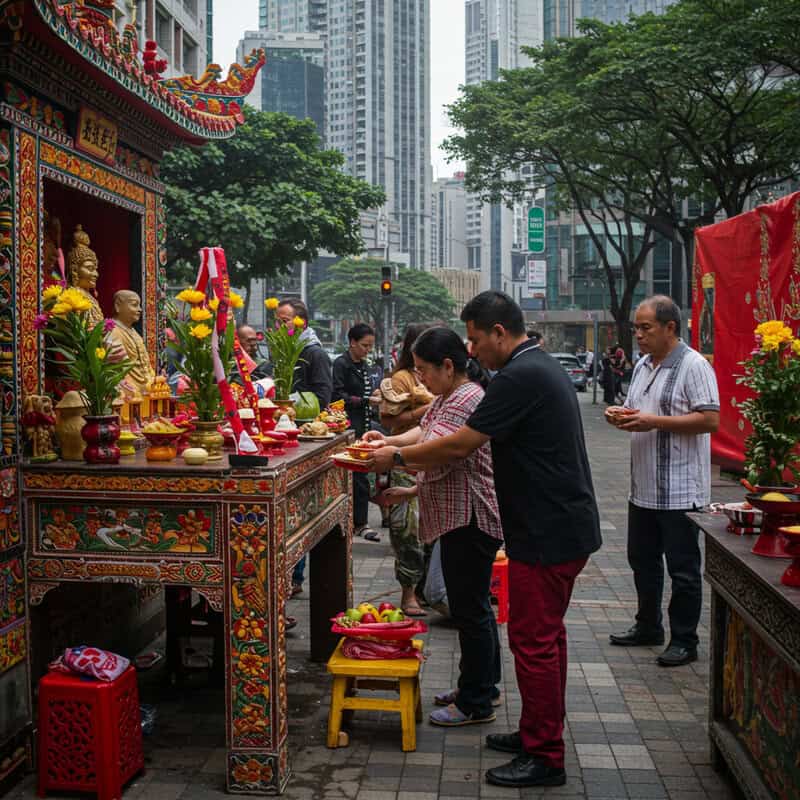
Ancestral worship is a foundational ritual in many cultures, rooted in the belief that deceased relatives influence the well-being and fortunes of the living. Ancient Chinese, African, and Indigenous societies developed elaborate ceremonies—such as offerings, prayers, and festivals—to honor and communicate with ancestors, seeking their guidance and protection (Britannica). These rituals reinforce family lineage and communal continuity, often forming the backbone of cultural identity.
Urban dwellers have adapted ancestral reverence to fit city life, maintaining home altars, displaying photographs, and lighting candles or incense to remember loved ones. Annual events like Mexico’s Día de los Muertos and Japan’s Obon festival are celebrated in city homes and community spaces, blending traditional customs with urban sensibilities (National Geographic). Digital memorials and online gatherings are also becoming common, especially among diaspora communities. These practices offer emotional comfort, strengthen intergenerational bonds, and provide a sense of continuity amid the fast pace of city living. By honoring ancestors in both private and communal ways, urban residents keep ancient traditions alive, weaving the past into the fabric of modern life.
22. Water Blessing Rituals
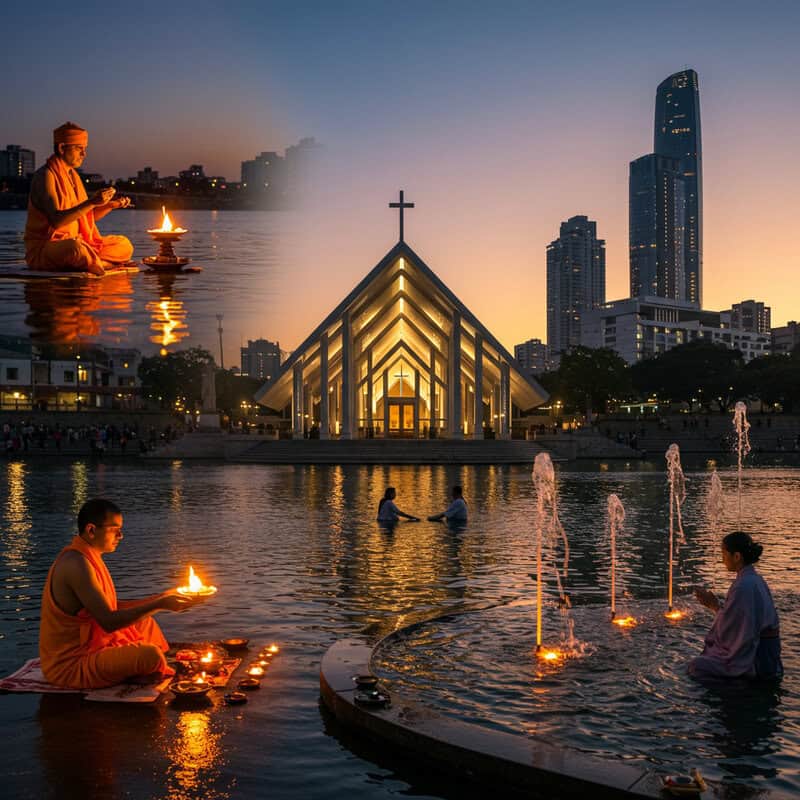
Water has long been regarded as a symbol of purification, renewal, and spiritual power in cultures worldwide. Ancient civilizations practiced water blessing rituals—from the Hindu Ganga Aarti along the Ganges River to Christian baptisms and Japanese Shinto misogi, where water is used to cleanse both body and spirit (Britannica). These ceremonies often mark life transitions or seek to restore balance and well-being through ritual immersion, sprinkling, or anointing.
Modern urban wellness spas have adapted these traditions into experiences such as hydrotherapy circuits, mineral baths, and ceremonial bathing sessions. City dwellers frequent spas for sensory relaxation and symbolic renewal, often participating in guided rituals that draw from ancient water blessings (Spafinder). However, hygiene remains a critical concern in communal spa settings. Proper cleaning protocols, water filtration, and regular maintenance are essential to prevent the spread of bacteria and waterborne illnesses (CDC). Urban adaptations of water rituals thus blend spiritual and physical cleansing, offering rejuvenation while prioritizing public health and safety.
23. Offering Food to Spirits

Offering food to spirits and deities is a time-honored ritual found in cultures across Asia, Africa, and the Americas. In traditions such as the Chinese ancestral altar, Hindu puja, and Mexican Día de los Muertos, food is presented as a gesture of respect, gratitude, and ongoing connection with the spiritual realm (Britannica). These offerings often include fruits, sweets, rice, and favorite dishes of ancestors or gods, symbolizing sustenance for both the living and the departed.
Urban families continue these practices by setting aside small portions of meals at home altars, lighting incense, or preparing special foods during festivals. In city apartments, these rituals may be performed daily, at holidays, or on significant anniversaries, adapting to limited space and busy lifestyles. Community temples and cultural centers in cities often host collective food offering ceremonies, bringing together diverse urban populations (National Geographic). Beyond their spiritual symbolism, these acts foster mindfulness, gratitude, and intergenerational connection, helping urban residents maintain a sense of tradition and reverence in the flow of modern city life.
24. Storytelling Circles
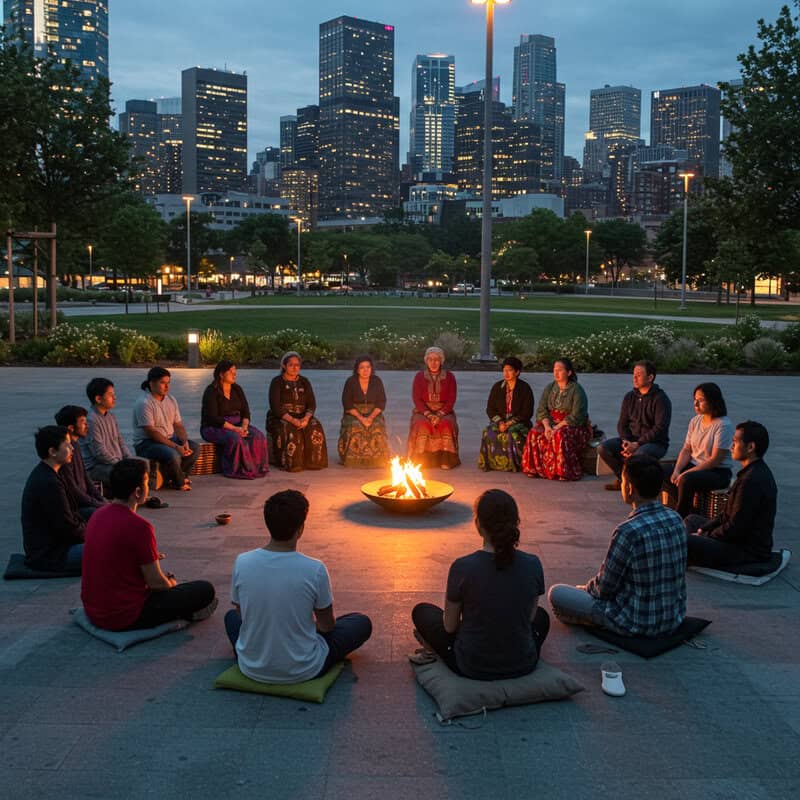
Oral storytelling is one of humanity’s oldest traditions, used to transmit history, values, myths, and lessons across generations. From African griots and Native American elders to ancient Greek bards, storytelling circles have been essential for preserving culture and fostering a shared sense of identity (Britannica). These gatherings traditionally took place around fires, in village squares, or at seasonal festivals, binding communities through shared narrative experience.
In modern cities, the storytelling tradition thrives through spoken word events, open mic nights, and community story circles hosted in libraries, cafes, and theaters. Organizations such as The Moth bring people together to share personal stories, weaving new social fabrics in urban environments (The Moth). These events are more than entertainment—they offer catharsis, cultivate empathy, and build resilience by validating diverse experiences and fostering mutual understanding. Especially during times of crisis or change, storytelling circles provide a platform for healing and solidarity, empowering individuals and strengthening community bonds. By carrying forward the ancient art of oral storytelling, city dwellers nurture resilience and connection in the face of modern urban challenges.
25. Sacred Tattoos and Scarification

Body modification through sacred tattoos and scarification has deep ritual roots in cultures across Africa, Oceania, the Americas, and Asia. Historically, these practices signified rites of passage, tribal affiliation, spiritual protection, or social status. Polynesian tattooing, West African scarification, and Native American ink designs are just a few examples of how body art served as a living record of identity and experience (Britannica). The designs themselves often carry symbolic meanings, invoking ancestors, deities, or nature.
In today’s urban environments, there has been a resurgence of interest in these ancient forms of body modification. Many city dwellers seek tattoos or scarification as a way to honor heritage, express individuality, or participate in contemporary interpretations of traditional rituals (National Geographic). However, safety is essential. Experts advise choosing licensed studios, ensuring sterile equipment, and following meticulous aftercare procedures to prevent infections and complications. Scarification, in particular, poses unique health risks and should only be performed by trained professionals under hygienic conditions (CDC). Responsible practices allow urban populations to embrace meaningful body art while protecting their health.
26. Harvest Festivals
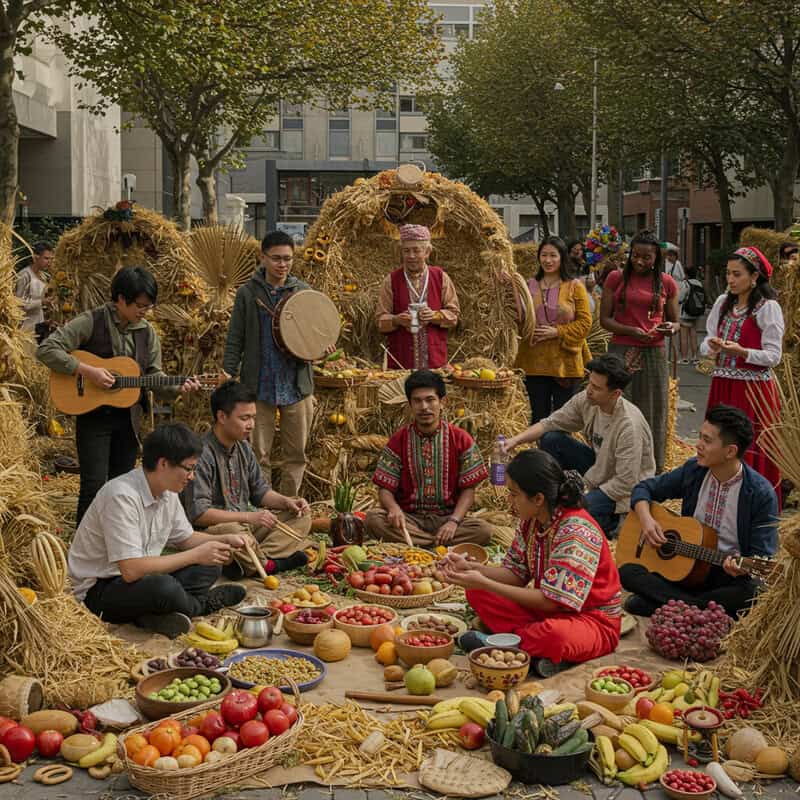
Harvest festivals are among the oldest human celebrations, originating in agrarian societies as a way to give thanks for a successful growing season and ensure future abundance. Rituals like the European Lammas, Chinese Mid-Autumn Festival, and American Thanksgiving were marked by communal feasts, music, and offerings to deities or ancestors (Britannica). These gatherings strengthened social bonds, reinforced cultural identity, and promoted collective gratitude.
In modern urban settings, harvest festivals have evolved to reflect city life, often centering around farmers’ markets, community gardens, and multicultural food fairs. Events such as London’s Urban Harvest Festival and New York’s Greenmarket Harvest Fest invite residents to celebrate local produce, sustainable agriculture, and diverse culinary traditions (Time Out London). These festivals foster community engagement, promote healthy eating, and provide educational opportunities about nutrition and food origins. Studies suggest that communal celebrations can improve mental well-being by reducing social isolation and encouraging positive social interactions (NCBI). By adapting ancient rites to urban realities, harvest festivals continue to nourish both body and community spirit.
27. Sacred Fire Walking
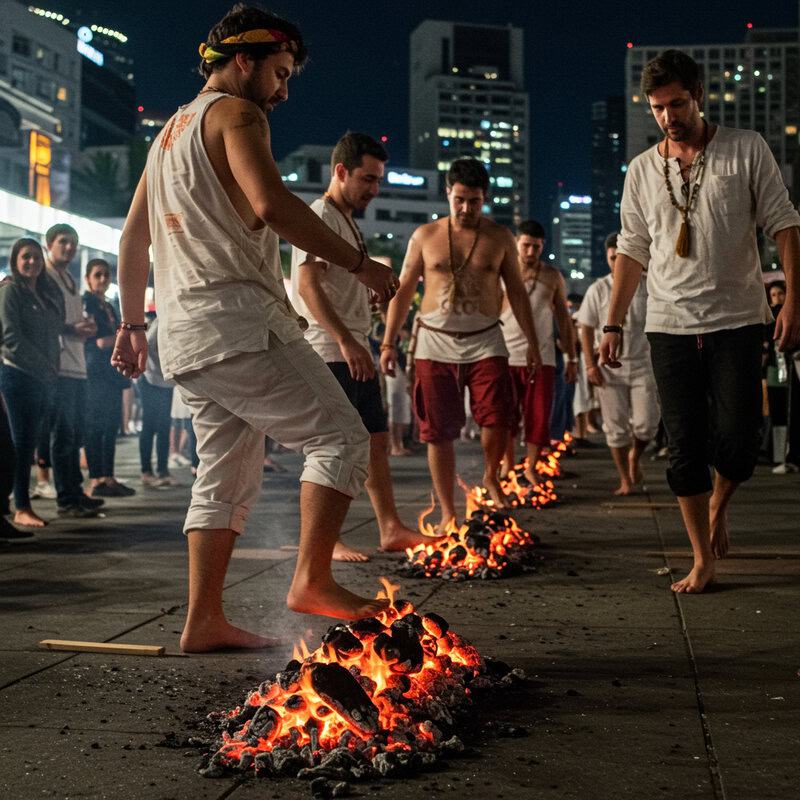
Fire walking is an ancient ritual practiced by cultures in India, Greece, Fiji, and parts of Africa, symbolizing purification, faith, and personal transformation. Traditionally performed during religious festivals or rites of passage, participants walk barefoot across hot coals or embers, often accompanied by chanting and prayers to demonstrate spiritual strength and community solidarity (Britannica). This act is believed to foster resilience and invoke blessings from deities or ancestors.
In contemporary urban environments, fire walking has evolved into both spiritual ceremony and motivational performance. Cities host fire walking events as part of workshops, wellness retreats, or cultural festivals, attracting those seeking empowerment or unique communal experiences (National Geographic). However, safety education is paramount. Organizers must ensure proper fire preparation, provide detailed participant instructions, and have medical personnel on standby. Experts emphasize the importance of understanding the physics behind fire walking—such as the low thermal conductivity of coals—and discourage unsupervised attempts. When approached responsibly, urban fire walking transforms an ancient ordeal into a safe, inspiring ritual for self-discovery and group unity.
28. Animal Blessing Ceremonies
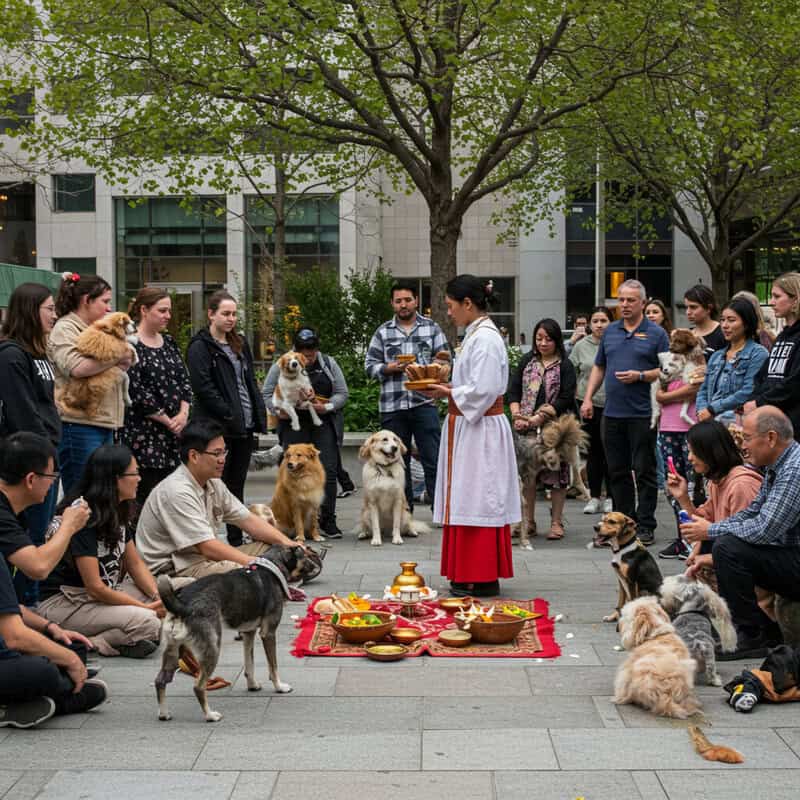
Animal blessing ceremonies have ancient roots, with traditions found in Indigenous cultures, Hinduism, and Christianity. Historically, rituals such as the feast day of St. Francis of Assisi or Hindu Gopashtami honored animals for their companionship, service, and spiritual significance (Britannica). These ceremonies often involve prayers, symbolic offerings, and communal gatherings, reflecting gratitude and fostering a sense of interconnectedness between humans and animals.
In urban centers, animal blessing rituals have become popular community events, especially as city living brings people and pets closer together. Churches, animal shelters, and parks frequently host annual pet blessings, where residents bring their dogs, cats, birds, and even reptiles to receive a prayer or symbolic gesture of protection and well-being (The New York Times). These events raise awareness about animal welfare, promote responsible pet ownership, and build connections among neighbors. Additionally, they support local shelters and rescue organizations by encouraging adoption and education. Through the adaptation of ancient animal blessing rituals, urban communities celebrate the vital role pets play in enhancing well-being and social cohesion.
29. Maypole and Circle Dances
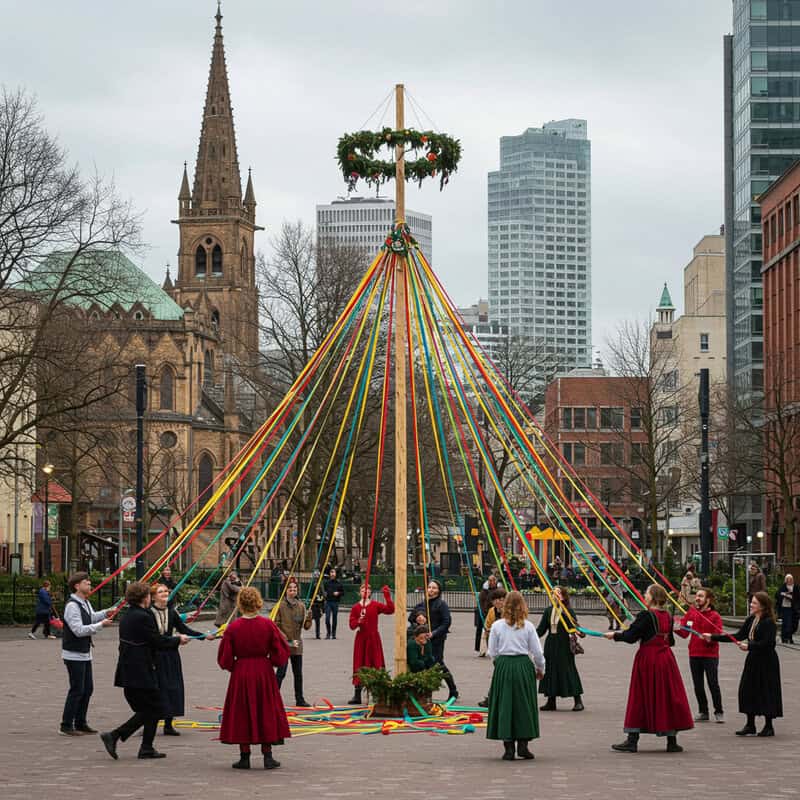
Circle dances, including the iconic Maypole dance, have been practiced since ancient times as communal rituals to celebrate fertility, seasonal change, and social unity. Originating in Europe, the Maypole tradition involves dancers weaving ribbons around a tall pole in synchronized patterns, often during festivals like May Day and midsummer. Similar circle dances with deep symbolic meaning appear in Greek, Balkan, and Middle Eastern cultures, connecting participants through rhythm and movement (Britannica).
In modern urban festivals, circle and Maypole dances remain popular, featured at community fairs, cultural celebrations, and city parks. These events offer residents a chance to engage in joyful, inclusive activities that transcend language and background—bringing together people of all ages and cultures (Time Out London). Beyond their cultural resonance, circle dances offer significant physical activity benefits. The coordinated steps, turns, and hand-holding promote cardiovascular health, improve balance, and enhance social bonds. Participating in such dances can boost mood and reduce stress, making these ancient rituals a lively and healthful addition to urban community life.
30. New Year’s Cleansing Rituals

New Year’s cleansing rituals have deep roots in cultures around the world, symbolizing the removal of negativity and preparation for renewal. Traditions range from Japan’s osoji (thorough house cleaning) and Latin America’s sweeping out the old year, to burning effigies or herbs in Europe and Africa (Britannica). These acts are believed to purify homes, minds, and spirits, ensuring good fortune and health in the coming year.
In urban settings, cleansing rituals are adapted to apartment living and city regulations. Activities may include decluttering, mopping floors with salt water, lighting incense, or symbolically opening windows to let in fresh energy. Some communities organize shared clean-up events or meditation sessions to mark the transition together (Time Out Tokyo). For safety, experts recommend using non-toxic cleaning products, ensuring good ventilation when burning incense or herbs, and following fire codes when disposing of symbolic items (CDC). By blending ancient tradition with practical precautions, urban dwellers can welcome the new year with a refreshed environment and spirit.
31. Community Drumming
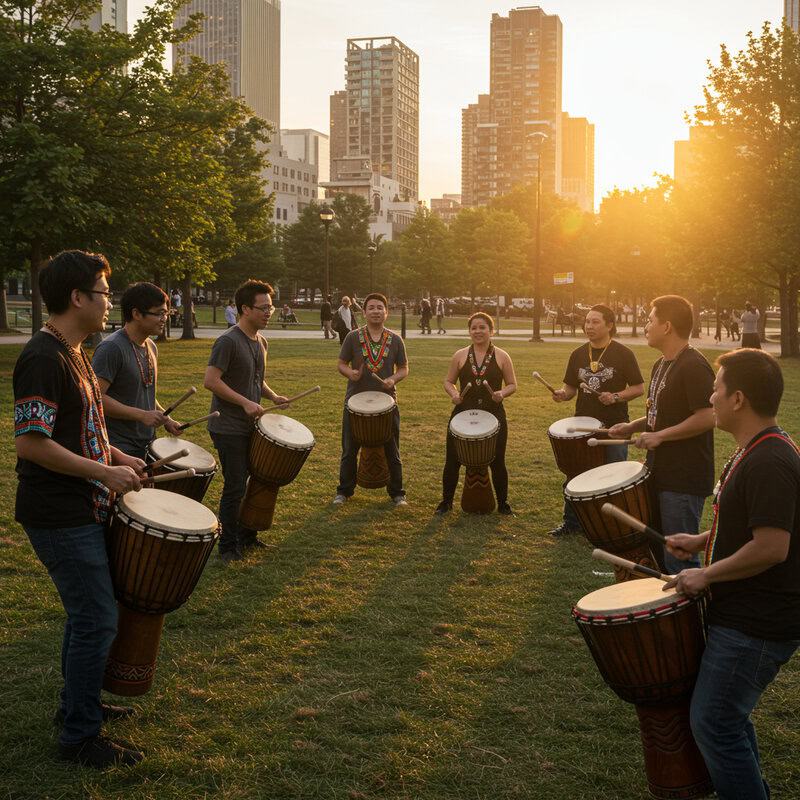
Drumming circles are ancient communal rituals found in African, Native American, and Asian cultures, often used for celebration, healing, and social cohesion. Traditionally, group drumming served as a means of communication, marking significant events such as harvests, rites of passage, or spiritual ceremonies (Britannica). The repetitive rhythms and collective participation are believed to synchronize group energy, foster unity, and invite trance-like states.
In modern cities, community drumming circles thrive in public parks, art centers, and wellness studios. Urban participants are drawn to these gatherings for their inclusive nature—no prior musical experience is required, and people of all backgrounds are welcome. Research shows that group drumming can reduce stress, boost mood, and enhance immune function, while the physical act of drumming improves coordination and cardiovascular health (NCBI). Socially, drumming circles build community, encourage creative expression, and provide a sense of belonging in otherwise impersonal city environments. Thus, the ancient ritual of drumming endures as a vibrant, health-promoting activity that connects urbanites through rhythm and shared experience.
32. Sacred Silence Retreats
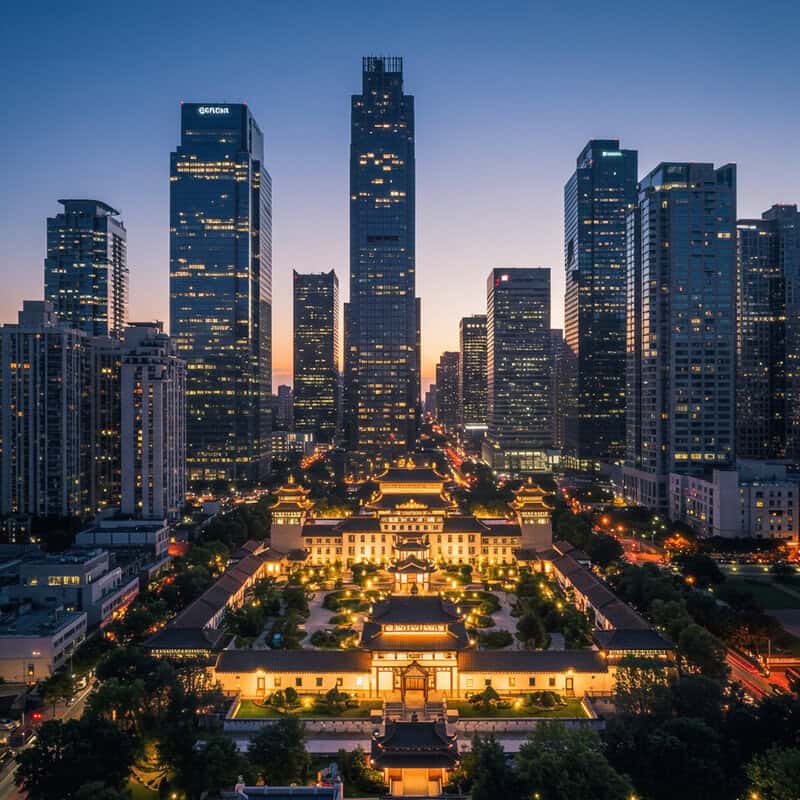
Silent retreats have been practiced for centuries in various spiritual traditions, including Buddhism, Christianity, and Hinduism. Monasteries and ashrams historically provided spaces for extended periods of silence, believed to foster inner reflection, spiritual insight, and a deeper connection with the divine (Britannica). Techniques such as Vipassana meditation and Christian contemplative prayer center on the profound power of sustained quietude.
In today’s cities, the tradition endures through urban silent retreats, mindfulness workshops, and designated “quiet spaces” in wellness centers. Urban dwellers attend daylong or weekend silent retreats to unplug from digital noise, reset their mental state, and manage stress. Research indicates that practicing silence can lower cortisol levels, improve focus, and enhance emotional regulation (NCBI). Even brief periods of intentional silence—like turning off devices or meditating in a park—can provide mental health benefits amid urban bustle. Organizers recommend setting boundaries, communicating intentions to family or roommates, and choosing safe, comfortable environments for silent practice. In this way, sacred silence remains a valuable ritual for urban well-being.
33. Planting and Tree-Honoring
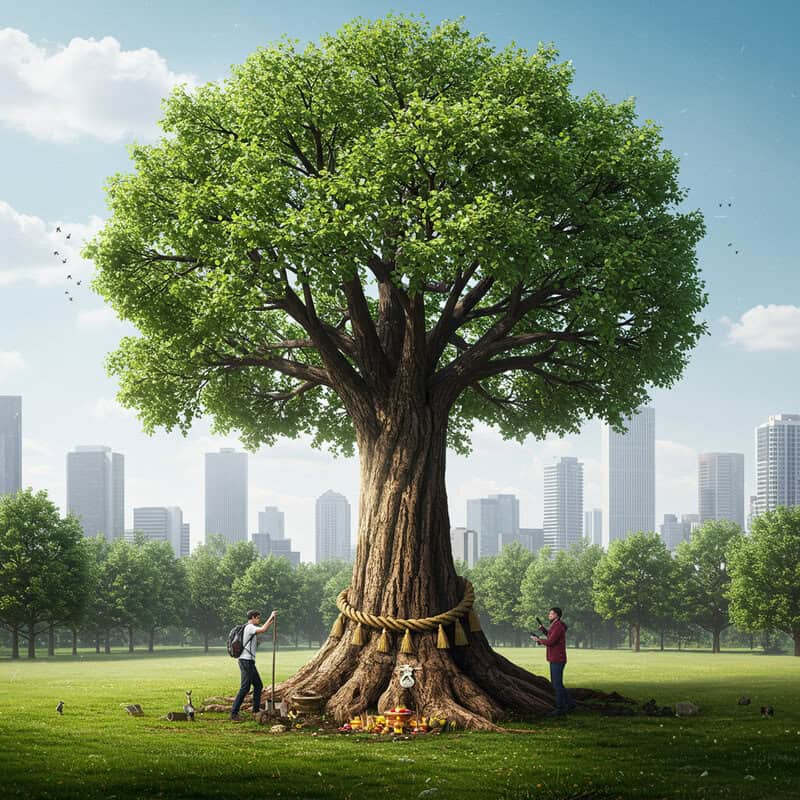
Tree worship is an ancient practice observed in cultures worldwide, from the sacred groves of the Celts and Greeks to the veneration of the Bodhi tree in Buddhism and banyan trees in Hinduism. Trees were seen as symbols of life, fertility, and connection between heaven and earth, often serving as sites for rituals and offerings (Britannica). Reverence for trees represented gratitude for shelter, food, and the balance of nature.
In modern urban contexts, the spirit of tree-honoring persists through community tree-planting ceremonies and green initiatives. City governments, environmental groups, and schools organize events where residents plant saplings in parks, along streets, or in vacant lots, transforming ecological action into a shared ritual (Arbor Day Foundation). These ceremonies are both symbolic and practical, promoting environmental stewardship, improving air quality, and fostering a sense of pride and togetherness. Urban tree-planting rituals often include blessings, music, and educational talks, reinforcing the link between ancient reverence and contemporary sustainability. By participating in these events, city dwellers contribute to urban renewal while honoring the enduring wisdom of tree veneration.
34. Candle Lighting for Remembrance
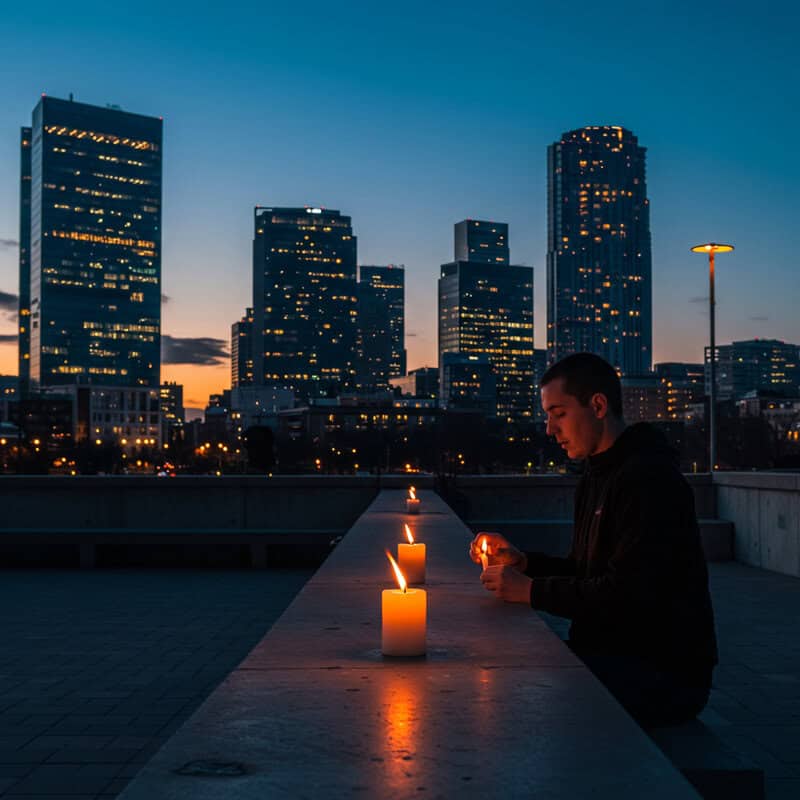
Lighting candles as an act of remembrance is a deeply rooted ritual found in numerous spiritual and cultural traditions worldwide. Ancient Romans, Christians, Jews, and Buddhists have long used candles in ceremonies to honor the deceased, mark anniversaries, and symbolize hope or prayer (Britannica). The gentle glow of a candle creates a space for reflection, comfort, and connection with loved ones who have passed.
In modern cities, candle lighting continues at public memorials, vigils, and places of worship. Events such as Holocaust Remembrance Day, World AIDS Day, and spontaneous gatherings after tragedies often feature rows of candles, uniting communities in collective mourning and solidarity (The New York Times). Urban dwellers also practice private candle lighting at home altars or windowsills. However, fire safety is crucial, especially in densely populated settings. Experts recommend using sturdy holders, keeping candles away from flammable objects, never leaving them unattended, and considering LED alternatives for public events (NFPA). These precautions ensure that the timeless act of remembrance remains both meaningful and safe in city life.
35. Sacred Circle Gatherings
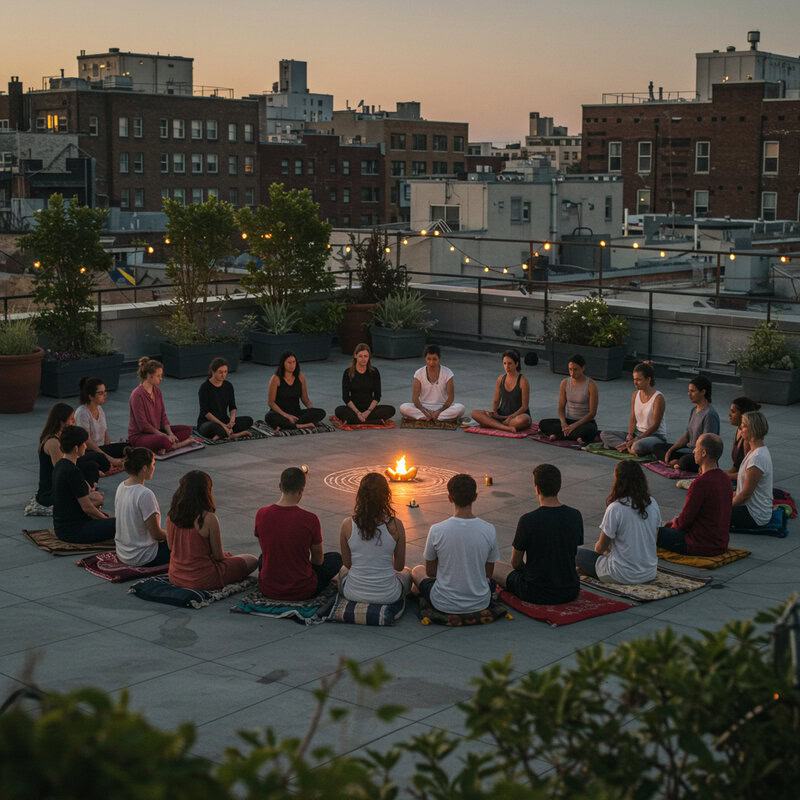
Sacred circle gatherings are a universal ritual form, symbolizing unity, equality, and shared intention. Traditionally, Indigenous communities, Celtic societies, and spiritual groups used circles for council meetings, healing ceremonies, and storytelling, believing that the shape fostered connection and balanced energy (Britannica). In a circle, no one sits at the “head,” reflecting principles of inclusivity and collective wisdom.
In contemporary urban life, sacred circles have found a place in healing groups, support meetings, and community workshops. Urban practitioners gather in circles for activities such as meditation, grief support, restorative justice, and women’s empowerment. These gatherings encourage participants to speak and listen from the heart, fostering psychological safety and emotional resilience (Psychology Today). Inclusivity is a key value—facilitators often set guidelines to ensure all voices are heard, regardless of background, age, or identity. By reviving this ancient ritual in diverse city settings, sacred circle gatherings create space for healing, dialogue, and collective growth, offering urban dwellers a sense of belonging and shared purpose amidst the anonymity of city life.
36. Blessing New Spaces
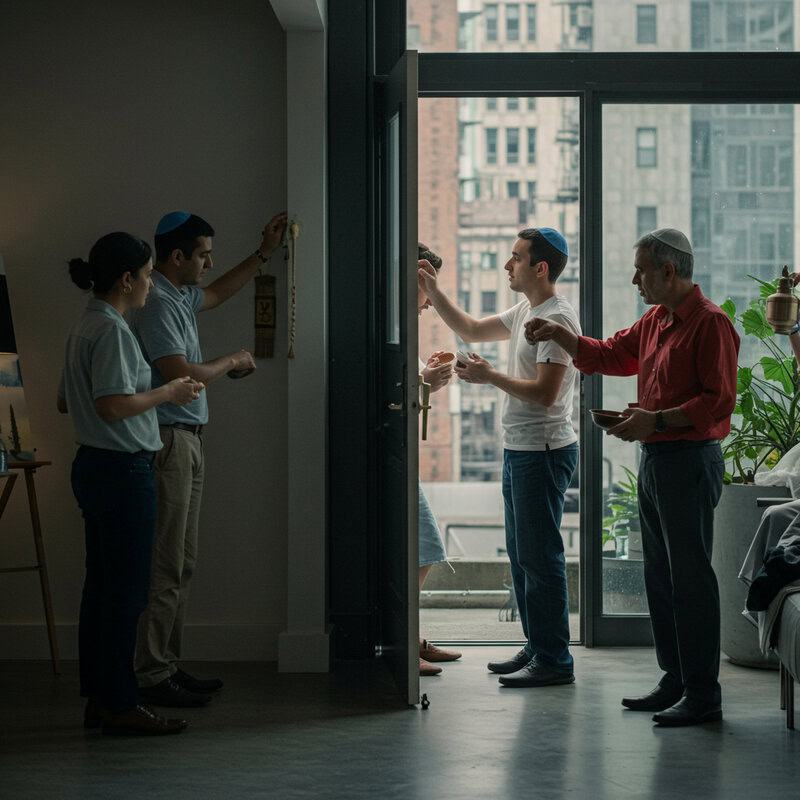
Blessing rituals for new homes or businesses are rooted in ancient customs meant to invite prosperity, harmony, and protection into a space. Traditions such as the Hindu griha pravesh, Jewish mezuzah placement, and Christian house blessings involve prayers, symbolic offerings, and sometimes the sprinkling of water or scattering of salt to purify and sanctify new dwellings (Britannica). These acts are believed to drive away negativity and establish a positive foundation for occupants.
In urban environments, space blessing rituals have been adapted to modern lifestyles, often performed by spiritual leaders or practiced independently by residents and business owners. Common elements include lighting incense, reciting affirmations, arranging fresh flowers, or inviting friends and family for a simple ceremony. Research suggests that such rituals can reduce anxiety, foster a sense of control, and enhance feelings of safety and optimism in a new environment (Psychology Today). Whether rooted in spiritual belief or personal intention, blessing new spaces remains a meaningful way for urban dwellers to mark transitions, invest emotionally in their surroundings, and cultivate a sense of well-being and belonging.
37. Naming Ceremonies
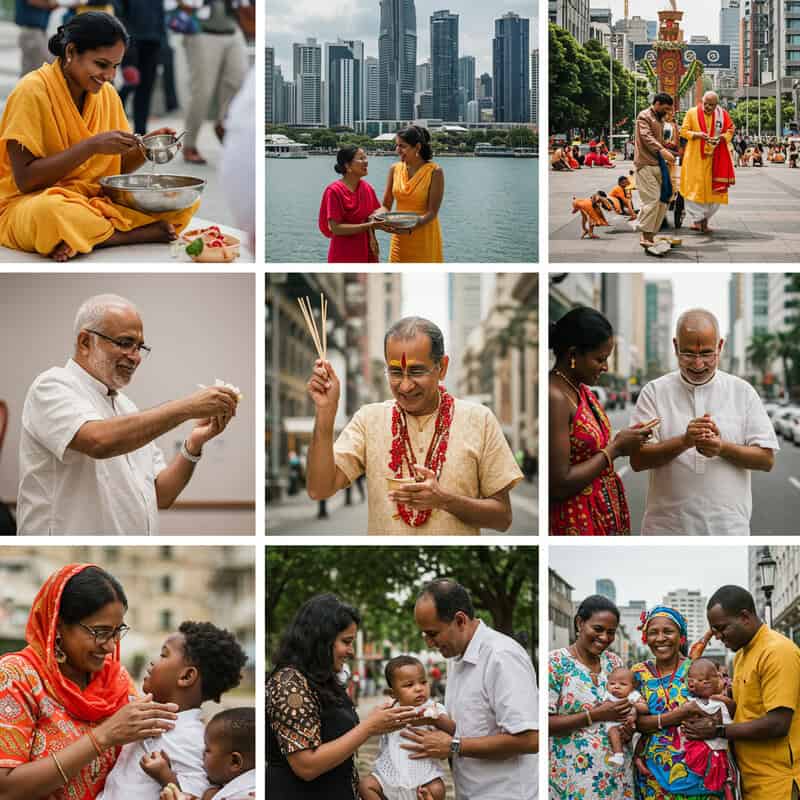
Naming ceremonies are ancient rituals marking the formal introduction of a child’s name, often imbued with prayers, blessings, and symbolic acts. Cultures worldwide—such as African naming days, Hindu Namkaran, and Christian christenings or baptisms—view this event as a rite of passage, conferring identity, spiritual protection, and community acceptance (Britannica). Names are chosen for their meanings, ancestral connections, or aspirations for the child’s future, and the ceremony often includes family and community members.
In modern urban environments, naming rituals are adapted to diverse lifestyles and multicultural contexts. Families may hold private gatherings at home, invite friends and relatives to a park or community center, or incorporate cultural rituals into secular celebrations. Some urban parents blend traditional naming rites with personalized touches, such as sharing stories behind the chosen name, writing wishes for the child, or planting a tree in their honor (The New York Times). These ceremonies strengthen family bonds, affirm cultural heritage, and create lasting memories. In the fast-paced city environment, naming ceremonies offer families a meaningful pause to celebrate new beginnings and the power of identity.
38. Sacred Story Carvings and Graffiti
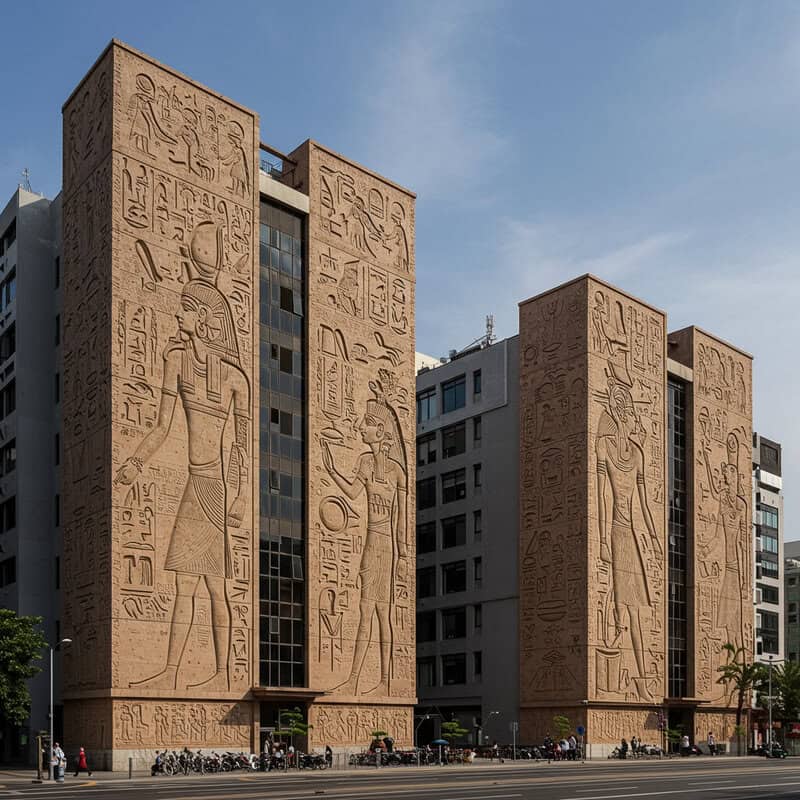
Story carving is an ancient practice that dates back to petroglyphs and hieroglyphics—visual narratives etched into stone, wood, or bone. These carvings served as both art and historical record, preserving the myths, achievements, and spiritual beliefs of early societies such as the Egyptians, Mayans, and Indigenous Australians (Britannica). The act of inscribing stories in public space created a lasting legacy and invited communal reflection.
In today’s cities, the tradition of storytelling through images finds new life in urban graffiti and street art. Walls, underpasses, and building facades become canvases for contemporary artists to express personal, political, and cultural narratives. Far from being merely vandalism, much urban graffiti is celebrated as public art, transforming cityscapes and sparking dialogue (National Geographic). Studies show that vibrant public art can foster community pride, reduce stress, and enhance mental well-being by adding beauty and meaning to everyday environments (NCBI). Thus, the ancient impulse to tell stories through carving is alive in the creative resilience of urban graffiti.
39. Moonlight Gatherings
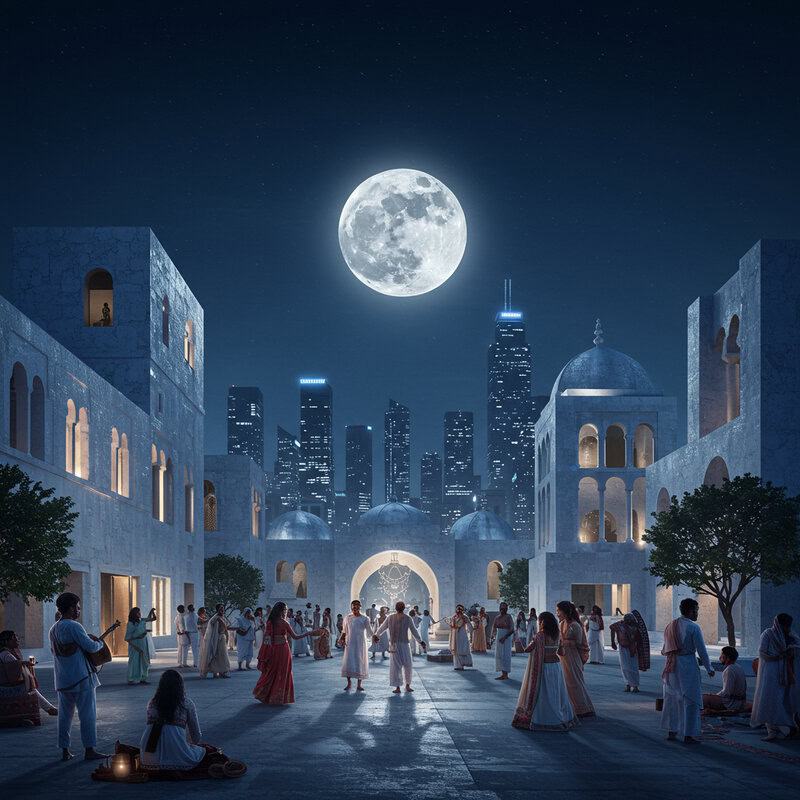
Moonlight gatherings have deep roots in ancient rituals, with cultures worldwide honoring the moon’s cycles through night-time ceremonies, dances, and storytelling. The full moon was often associated with fertility, renewal, and heightened spiritual energy in traditions such as the Chinese Mid-Autumn Festival, Native American lunar dances, and Hindu Purnima observances (Britannica). These events fostered community cohesion and offered a time for reflection and celebration under the celestial glow.
In contemporary urban life, moonlight rituals have found new expression atop city rooftops, in public parks, and at waterfronts. Urbanites gather for activities like full moon yoga, meditation circles, music performances, or poetry readings by moonlight. Organizations and wellness groups regularly host such events, providing city dwellers with opportunities to reconnect with nature and one another despite the urban environment (The New York Times). These gatherings are lauded for their ability to reduce stress, encourage mindfulness, and foster a sense of wonder and community. By adapting ancient moonlit rituals to modern cityscapes, urban residents find new ways to celebrate cycles of renewal and connection.
40. Sacred Sound Baths
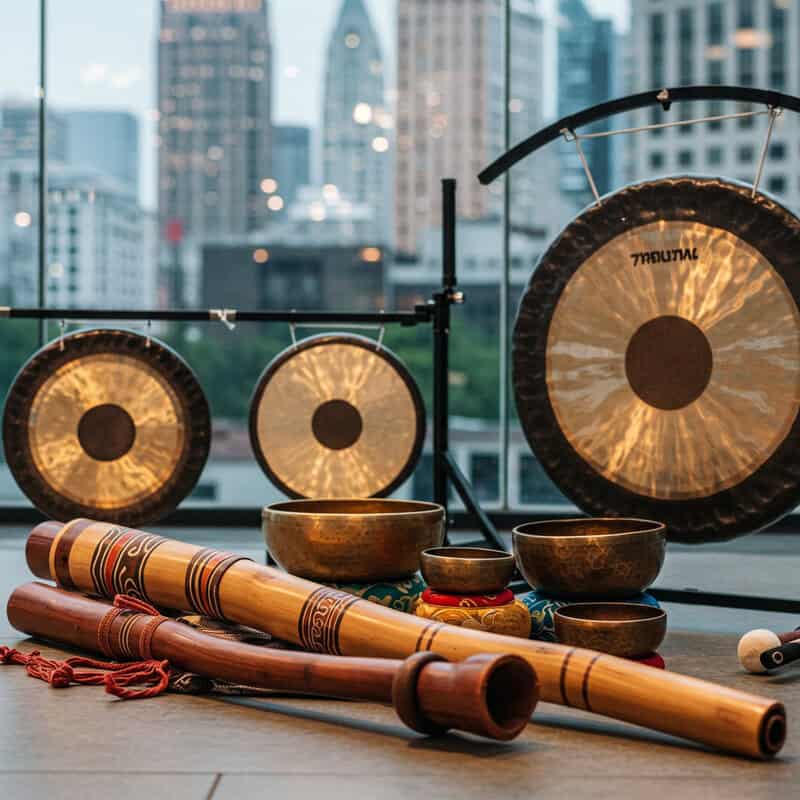
Sound healing is an ancient practice that traces its origins to cultures such as the Aboriginal Australians, who used the didgeridoo for ceremonial healing, and Himalayan regions, where singing bowls and gongs have been integral to meditation and spiritual rituals (Britannica). The belief in the transformative power of sound is grounded in the idea that rhythmic vibrations can harmonize the body and mind, promote relaxation, and facilitate emotional release.
In modern urban settings, sound baths are increasingly popular, often held in yoga studios, wellness centers, and even public parks. During these events, participants lie down or sit comfortably while facilitators play instruments such as crystal bowls, chimes, or gongs, immersing listeners in waves of soothing sound (The New York Times). Research suggests that sound baths can reduce stress, lower anxiety, and improve mood by inducing meditative brain states and calming the nervous system (NCBI). Urban residents embrace these ancient rituals for their sensory health benefits, finding peace and restoration amid the city’s constant noise.
41. Weaving and Textile Rituals
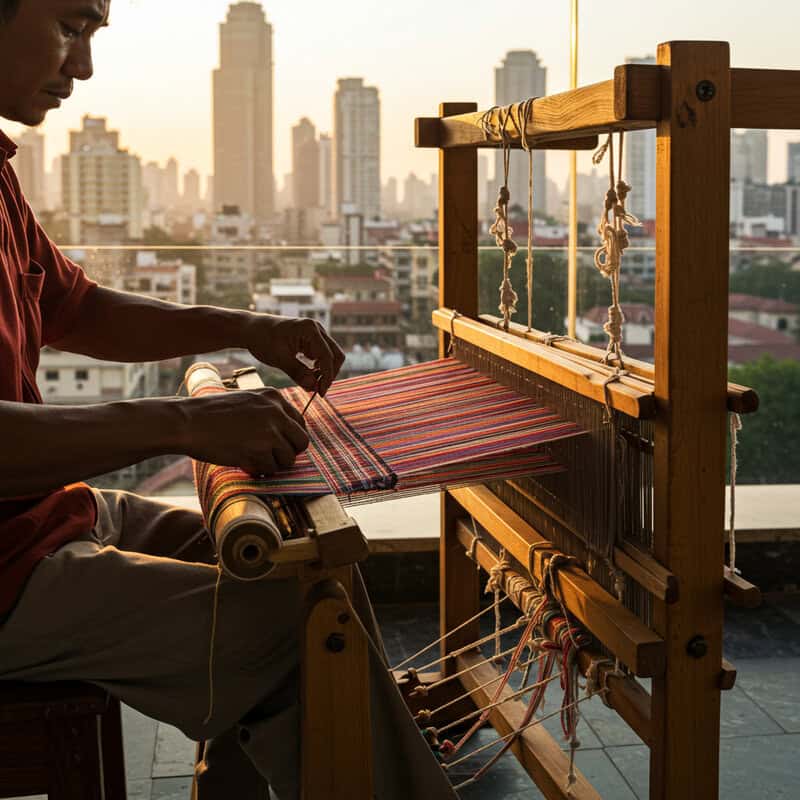
Weaving and textile creation have held ritual significance for thousands of years, symbolizing the interconnection of life, fate, and community. Ancient cultures from the Andes to West Africa and Greece incorporated weaving into ceremonies, storytelling, and expressions of cultural identity (Britannica). Mythologies, such as the Greek Fates or the Andean goddess Mama Ocllo, depict weaving as a sacred act, often tied to creation and destiny.
In modern city life, weaving endures through craft circles, fiber arts studios, and community workshops. Urban residents gather to knit, crochet, or weave, reviving traditional skills while building contemporary social networks. These gatherings offer a sense of belonging and collective creativity, bridging generational and cultural divides. Research indicates that repetitive textile crafts can reduce anxiety and promote relaxation, as the focused, rhythmic motions induce a meditative state and provide an outlet for self-expression (NCBI). Additionally, finished pieces serve as tangible reminders of resilience and care. By blending ancient ritual with modern community, weaving circles in cities nurture mental well-being and sustain the thread of tradition.
42. Sacred Bread Baking
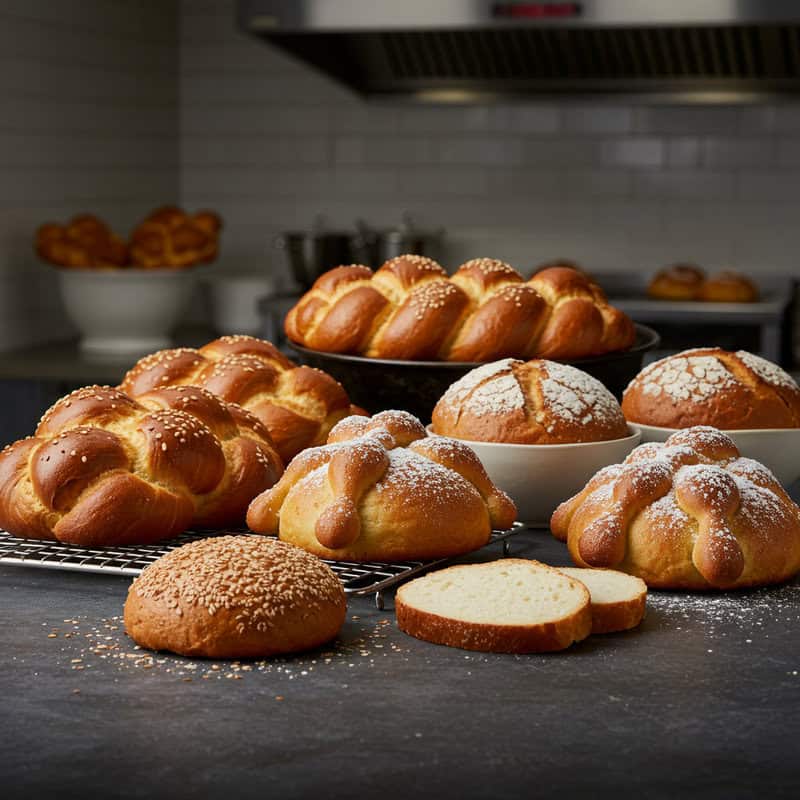
Bread baking is a ritual steeped in ancient symbolism, representing sustenance, hospitality, and the sacredness of daily nourishment. In cultures from ancient Egypt and Mesopotamia to medieval Europe and Indigenous America, bread featured prominently in religious ceremonies, harvest festivals, and communal meals (Britannica). Special loaves—such as challah, pan de muerto, and communion bread—carry deep spiritual meaning, marking rites of passage and holidays.
Urban kitchens have witnessed a revival of bread baking, particularly as city dwellers seek comfort and connection through hands-on traditions. Sourdough starters, braided loaves, and community bake swaps have become common in apartment complexes and local bakeries. The process of kneading, rising, and sharing bread fosters mindfulness and a sense of accomplishment. Research suggests that baking can relieve stress and improve mood, while the act of breaking bread together strengthens social bonds and nurtures communal spirit (The New York Times). In this way, the ancient ritual of bread baking continues to nourish urban communities—not only as physical sustenance, but as a source of shared meaning and togetherness.
43. Henna and Body Painting
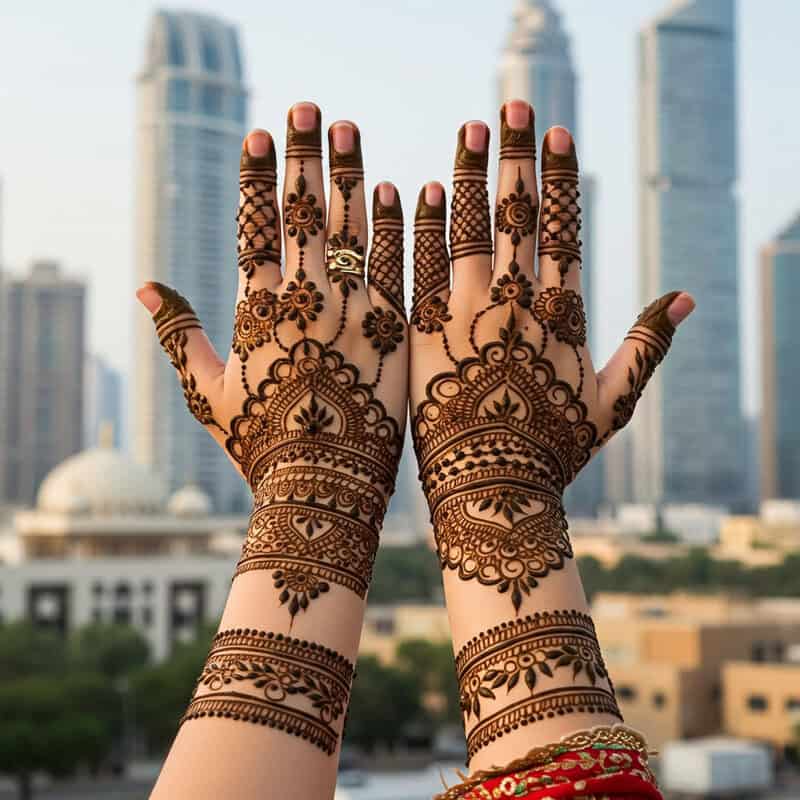
Henna body art, also known as mehndi, has adorned hands and feet for over 5,000 years, with roots in ancient South Asian, Middle Eastern, and North African cultures. Traditionally used to mark weddings, births, and religious festivals, henna carries deep symbolic meanings of luck, joy, and spiritual protection (Britannica). Other forms of body painting, such as Indigenous face painting and festival adornments, have been used for ritual, identity, and celebration worldwide.
In urban environments, henna and body painting are popular at cultural festivals, street fairs, and special events, where artists create intricate designs for participants of all backgrounds. These practices foster cultural exchange and provide opportunities for creative self-expression. However, skin safety is essential: dermatologists caution against “black henna,” which may contain harmful chemicals like para-phenylenediamine (PPD) and can cause allergic reactions (FDA). Experts recommend using only natural, plant-based henna from reputable sources and performing patch tests before application. With these precautions, the ancient ritual of body art continues to beautify and unite city dwellers in joyful, meaningful celebration.
44. Sacred Storytelling in Performance
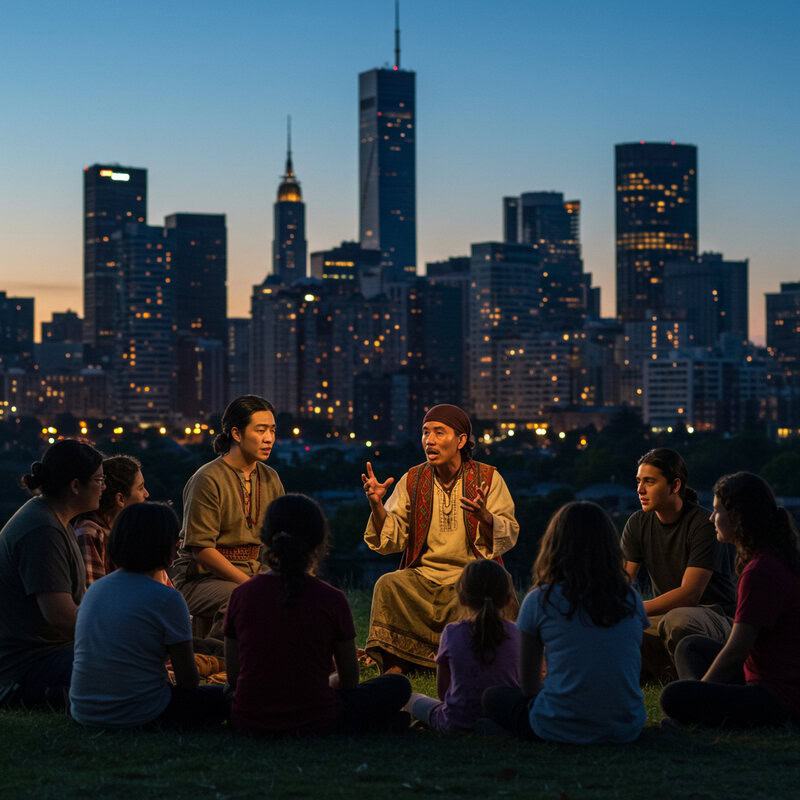
Epic storytelling is a time-honored ritual, central to the oral traditions of cultures such as the Greeks, West Africans, and Indigenous peoples of the Americas. Bards, griots, and shamans performed tales of gods, ancestors, and heroic deeds, using song, gesture, and drama to pass down collective memories and moral lessons (Britannica). These performances forged deep emotional connections within communities, inspiring reflection and unity.
In urban settings, sacred storytelling has evolved into modern theater, spoken word, and performance art. City theaters stage adaptations of classic myths, multicultural epics, and contemporary narratives that address social issues and personal journeys. Festivals and open mic nights give urban storytellers a platform to share both traditional and new stories, fostering empathy and dialogue among diverse audiences (The New York Times). These performances offer catharsis and a sense of belonging, allowing city dwellers to see their own struggles and hopes reflected on stage. By blending ancient ritual with modern creativity, urban storytelling performances keep the power of emotional connection and shared wisdom alive.
45. Ritualized Sports

Sports have ancient roots as ritualized activities, often tied to religious festivals, seasonal cycles, or rites of passage. The Olympic Games in ancient Greece began as a sacred event in honor of Zeus, while Mesoamerican ball games carried spiritual significance and were linked to cosmology and prophecy (Britannica). These gatherings fostered unity, celebrated physical prowess, and reinforced social bonds.
Modern cities continue this tradition through large-scale, ritualized sporting events like marathons, charity runs, and team tournaments. The New York City Marathon and London Marathon, for example, draw tens of thousands of participants and spectators, transforming city streets into spaces of collective achievement and festivity (The New York Times). These events promote community health by encouraging physical activity, social interaction, and civic pride. Studies show that participation in communal sports reduces stress, improves cardiovascular fitness, and enhances mental well-being (NCBI). Ritualized sports thus bridge ancient customs and urban life, offering a meaningful outlet for celebration, connection, and holistic wellness.
46. Sacred Geometry in Urban Design
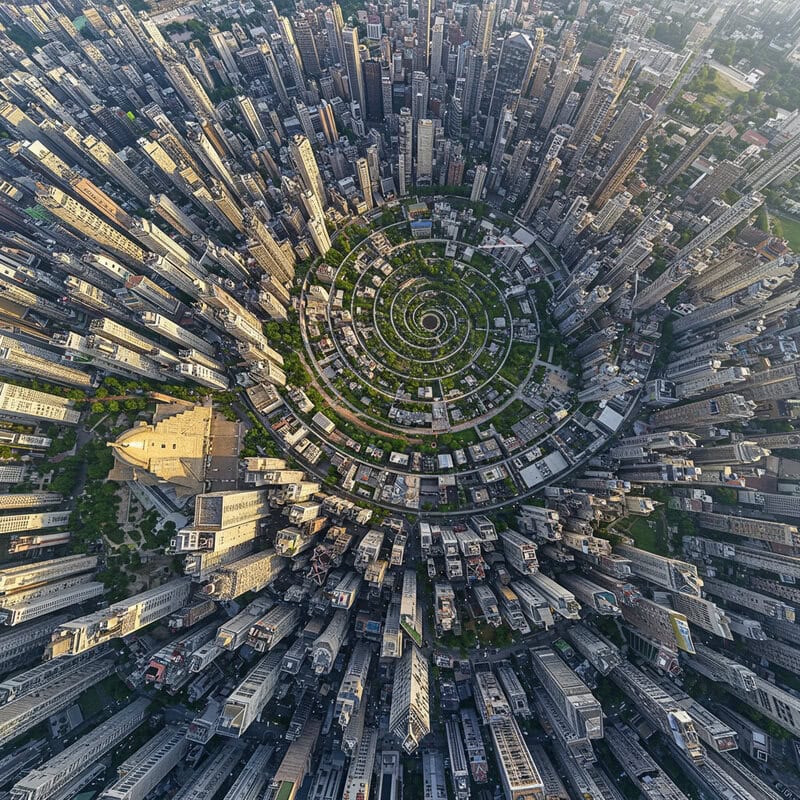
Sacred geometry—the use of specific geometric shapes and proportions imbued with symbolic meaning—has influenced architecture and urban planning since antiquity. Ancient cities, temples, and monuments, from the Egyptian pyramids to the Parthenon, were designed according to principles believed to align human activity with cosmic order and harmony (Britannica). Patterns such as circles, spirals, and the golden ratio have long been associated with spiritual balance and aesthetic beauty.
In contemporary urban design, these geometric concepts continue to shape the built environment. City planners and architects incorporate mandala layouts, labyrinths, and fractal patterns into parks, plazas, and building facades. Examples include the use of circular gathering spaces, hexagonal paving, and proportionally balanced skylines (ArchDaily). Such designs are credited with enhancing public well-being by creating visually harmonious and psychologically restorative environments. Research indicates that exposure to natural and geometric patterns in public spaces can reduce stress, boost mood, and encourage social interaction (NCBI). Sacred geometry thus bridges ancient wisdom and urban innovation, enriching city life with order, meaning, and beauty.
47. Sacred Animal Mascots
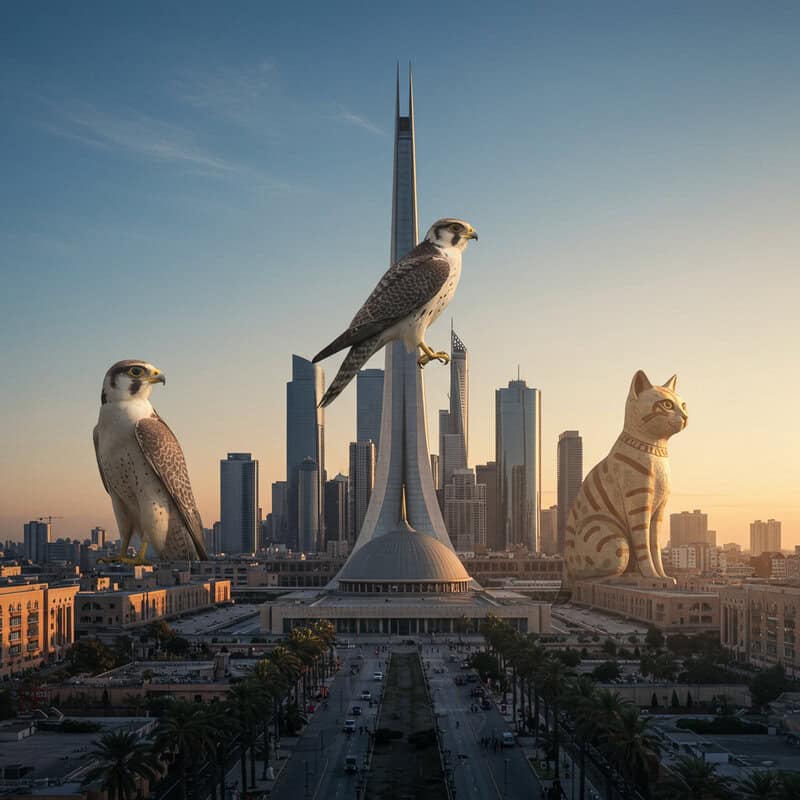
The tradition of adopting animals as sacred symbols or mascots dates back to ancient civilizations, where animals were revered as embodiments of clan spirits, deities, or protective forces. In ancient Egypt, animals like the falcon and cat were honored as representations of gods, while Native American tribes associated specific animals with family lineage and spiritual guidance (Britannica). Animal symbols thus played a vital role in fostering group cohesion, identity, and continuity.
In today’s urban contexts, animal mascots are embraced by schools, sports teams, and community organizations as emblems of collective spirit and pride. City-based teams adopt lions, eagles, wolves, or local wildlife to inspire loyalty and unity among members and supporters. The visual presence of mascots—on uniforms, murals, and at public events—strengthens group identity and provides a rallying point for community engagement (The New York Times). Psychologists note that shared symbols like mascots can boost morale, reduce social barriers, and enhance belonging (Psychology Today). By echoing ancient practices, animal mascots continue to unite urban groups and sustain communal meaning in the modern age.
48. Sacred Poetry and Recitation
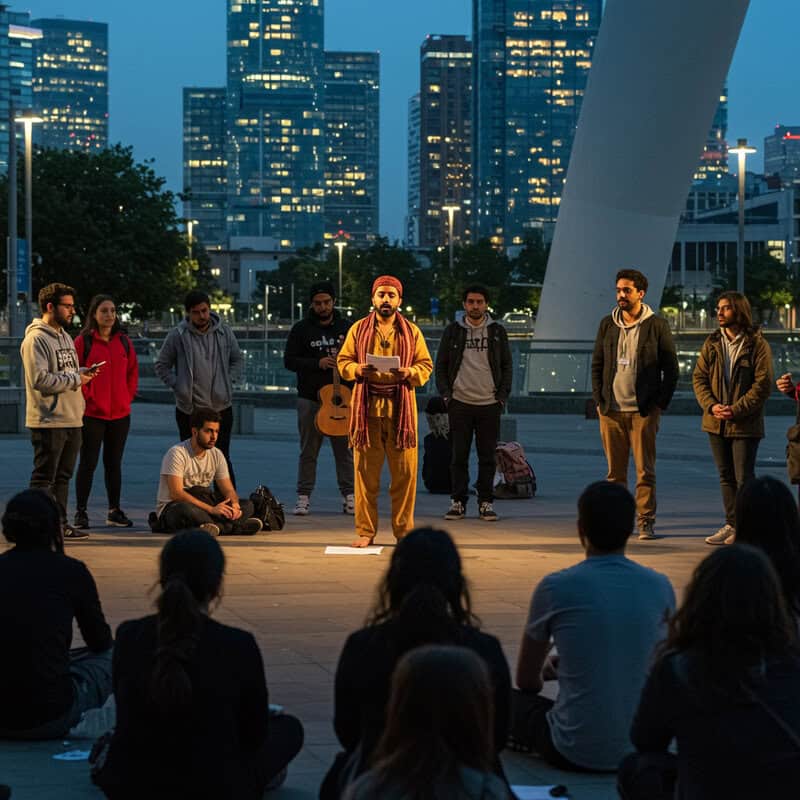
Poetry originated as a sacred form of expression, deeply intertwined with ritual, myth, and communal memory. Ancient poets and orators, such as the Greek rhapsodes, Vedic chanters, and Sufi mystics, recited verses to honor deities, commemorate events, and convey spiritual truths (Britannica). The rhythmic language and oral performance of poetry enhanced its power to unite listeners in shared emotion and reflection, making it a central feature of ceremonies and gatherings.
In today’s urban environments, the tradition of sacred recitation lives on through poetry slams, open-mic nights, and spoken word events. Coffeehouses, libraries, and theaters across cities host these gatherings, where poets and audiences come together to celebrate creative expression and explore themes ranging from love and social justice to personal identity. Organizations like The Poetry Foundation foster this modern ritual, supporting workshops and public readings. Participation in poetry events is linked to improved mental well-being, confidence, and community engagement (NCBI). Through the timeless act of spoken verse, urban dwellers connect with ancient traditions of meaning-making and creative resilience.
49. Sacred Bell Ringing
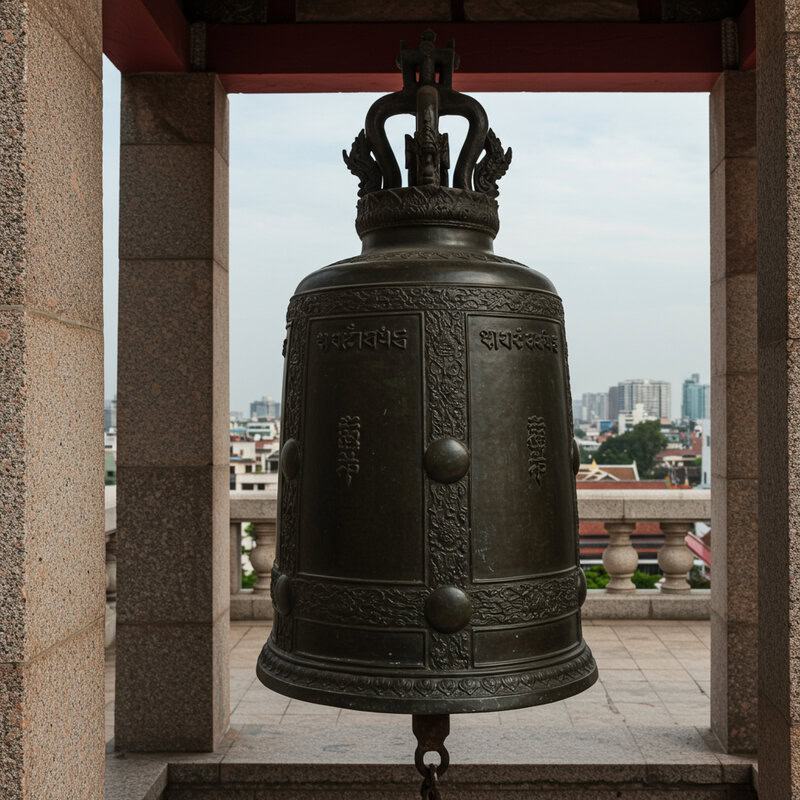
The ritual use of bells dates back thousands of years, with cultures across Asia, Europe, and Africa employing bell sounds to mark sacred moments, ward off evil, and signal communal gatherings. In Buddhist and Shinto temples, bells are rung to invite mindfulness and spiritual presence; in medieval Europe, church bells regulated daily life and called communities to prayer or celebration (Britannica). The clear, resonant tone of a bell is often seen as a bridge between the earthly and divine.
In urban environments, the tradition endures through church bell towers, civic ceremonies, and public art installations. Many cities mark significant events—such as New Year’s midnight, weddings, and memorials—with bell ringing, uniting residents in shared experience. The regular pealing of bells from cathedrals or city halls provides psychological cues, signaling the passage of time, transitions, or calls to reflection. Research indicates that such auditory rituals can reduce stress, promote a sense of order, and foster community identity (NCBI). Sacred bell ringing thus remains a powerful, unifying ritual that resonates through the rhythms of modern city life.
50. Sacred Animal Costuming
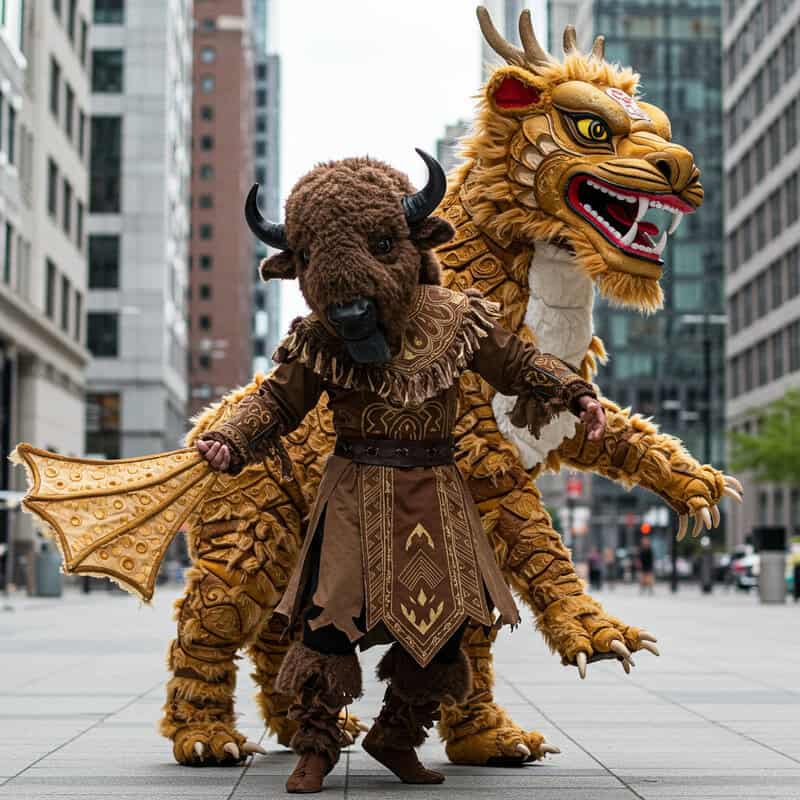
The ritual of dressing as or adorning animals has ancient roots, seen in ceremonies where participants don animal skins, masks, or costumes to channel the spirit or power of revered creatures. Examples include the Native American buffalo dance, African masquerades, and the lion and dragon dances of East Asia, all of which use costuming to invoke blessings, ensure successful hunts, or celebrate seasonal changes (Britannica). These traditions fostered a sense of identity, connection with nature, and communal joy.
In modern cities, sacred animal costuming finds playful expression in pet parades, costume contests, and charity walks. Events like New York City’s Tompkins Square Halloween Dog Parade draw thousands of participants and spectators, celebrating creativity and the bond between people and their pets (The New York Times). While these gatherings promote community spirit and animal welfare awareness, public health considerations are important. Organizers and pet owners should ensure costumes are safe, non-restrictive, and do not cause overheating or distress. Veterinary experts advise against toxic materials and recommend monitoring pets for signs of discomfort (ASPCA). These adaptations keep ancient costuming rituals alive in a fun, safe, and compassionate manner.
Conclusion
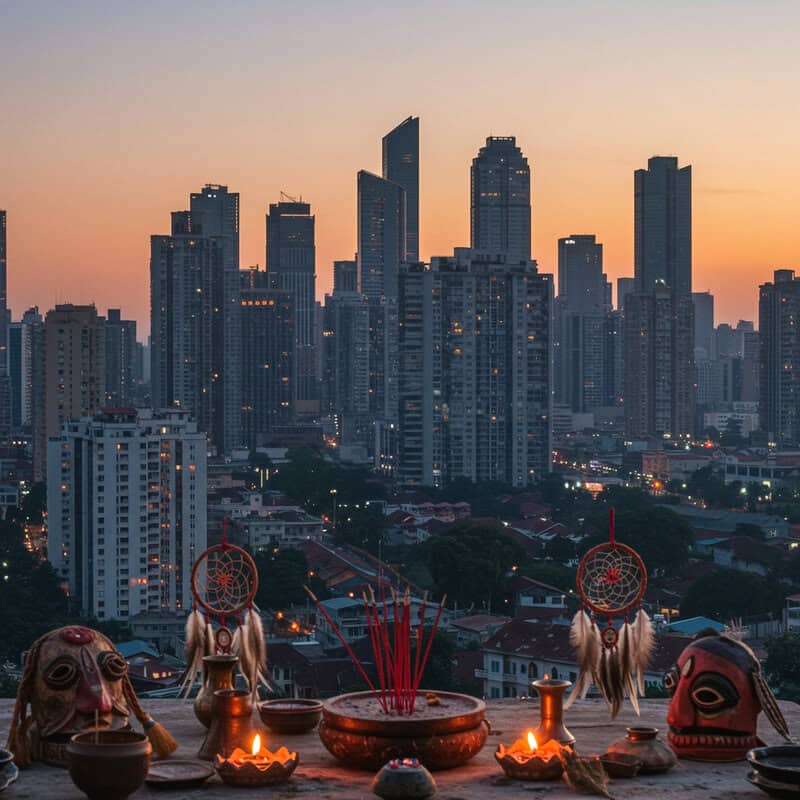
Ancient rituals continue to shape urban life, offering powerful connections to heritage, community, and personal wellbeing. As these traditions adapt to city landscapes, they provide comfort, identity, and opportunities for collective celebration. Balancing cultural preservation with health awareness is essential—urban dwellers should enjoy rituals mindfully, prioritizing safety and inclusivity while embracing diversity (NCBI). Proactive participation in community events and informed choices about mental and physical practices can enhance both individual and communal resilience. By honoring the wisdom of the past and integrating it thoughtfully into modern routines, city residents ensure these rituals remain vibrant, meaningful, and beneficial for generations to come (Psychology Today).
Disclaimer
The information provided in this article is for general informational purposes only. While we strive to keep the information up-to-date and correct, we make no representations or warranties of any kind, express or implied, about the completeness, accuracy, reliability, suitability, or availability with respect to the article or the information, products, services, or related graphics contained in the article for any purpose. Any reliance you place on such information is therefore strictly at your own risk.
In no event will we be liable for any loss or damage including without limitation, indirect or consequential loss or damage, or any loss or damage whatsoever arising from loss of data or profits arising out of, or in connection with, the use of this article.
Through this article you are able to link to other websites which are not under our control. We have no control over the nature, content, and availability of those sites. The inclusion of any links does not necessarily imply a recommendation or endorse the views expressed within them.
Every effort is made to keep the article up and running smoothly. However, we take no responsibility for, and will not be liable for, the article being temporarily unavailable due to technical issues beyond our control.

